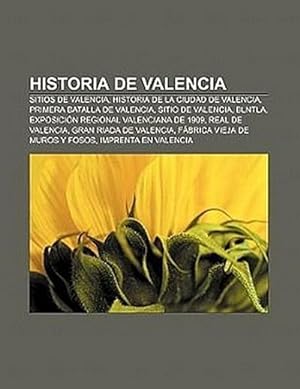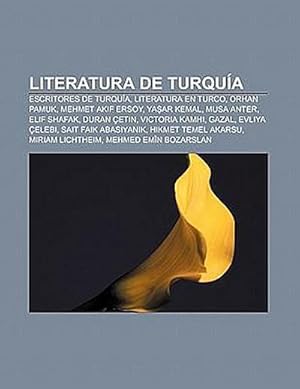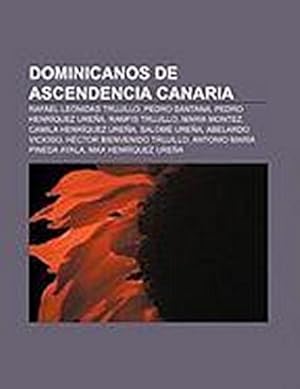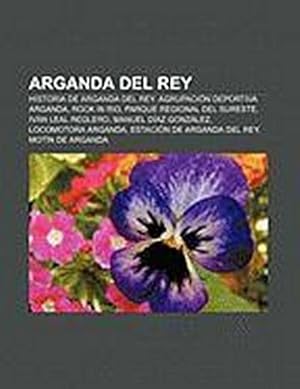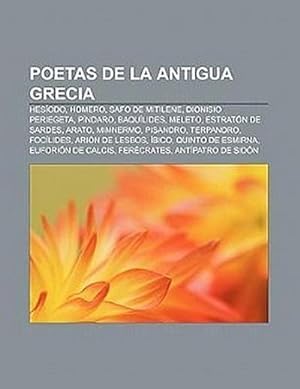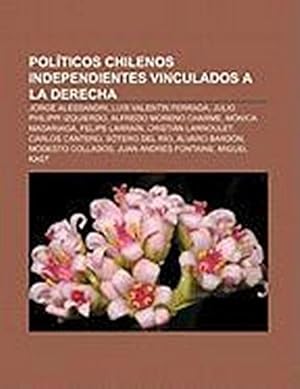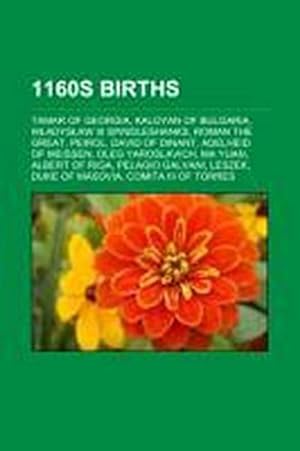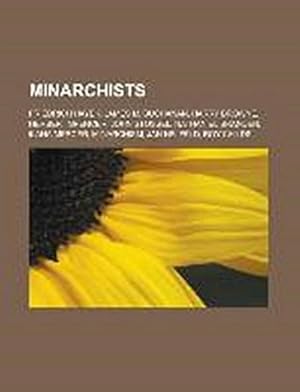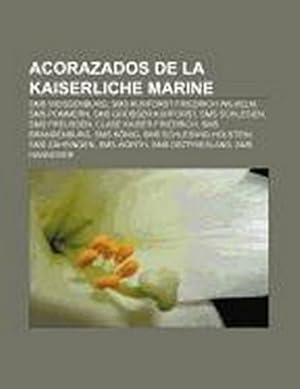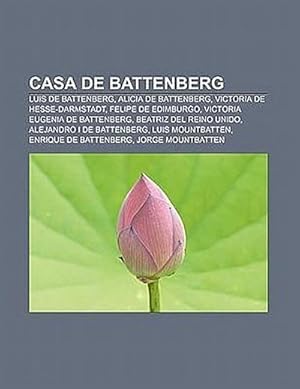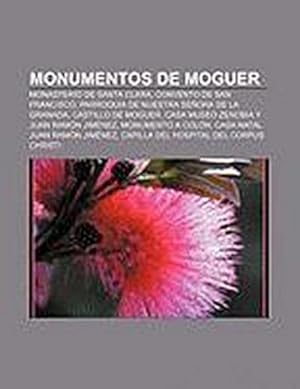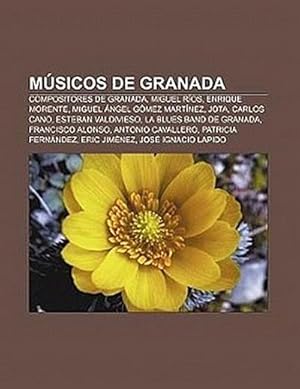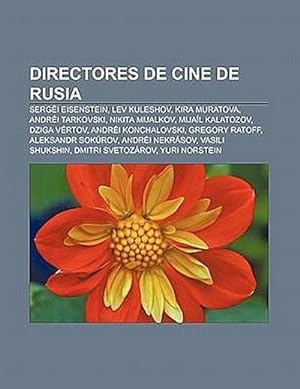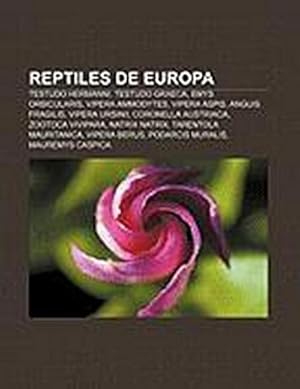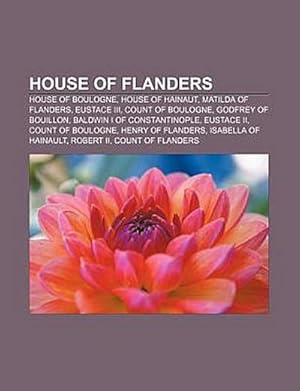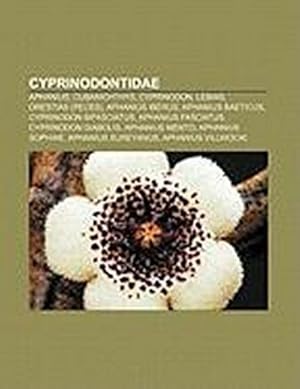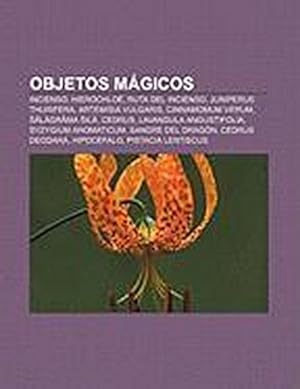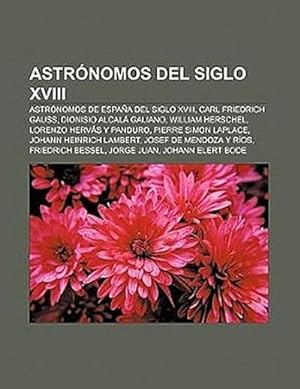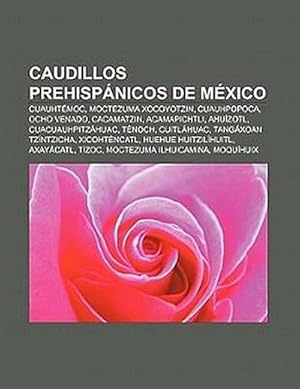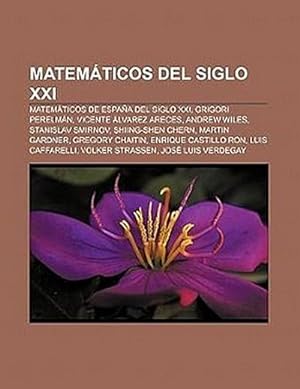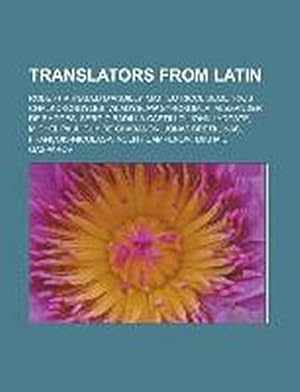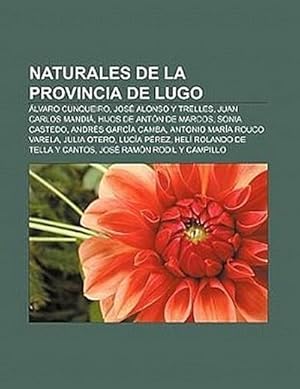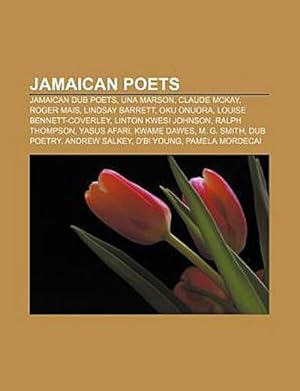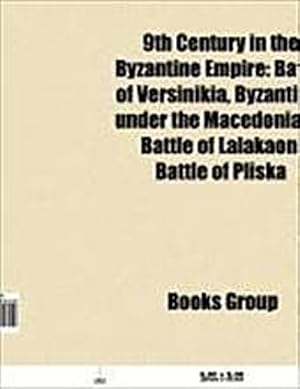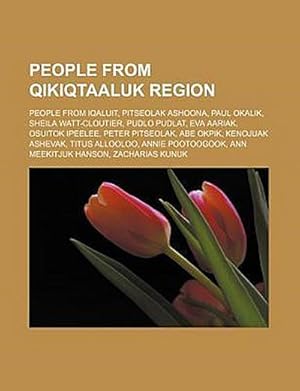reference series books llc jun 2011 (685 results)
Product Type
- All Product Types
- Books (685)
- Magazines & Periodicals
- Comics
- Sheet Music
- Art, Prints & Posters
- Photographs
- Maps
-
Manuscripts &
Paper Collectibles
Condition
- All Conditions
- New
- Used
Binding
- All Bindings
- Hardcover
- Softcover
Collectible Attributes
Seller Location
Seller Rating
-
British animators
Published by Reference Series Books LLC Jun 2011, 2011
ISBN 10: 1156071534ISBN 13: 9781156071533
Seller: BuchWeltWeit Ludwig Meier e.K., Bergisch Gladbach, Germany
Book Print on Demand
Taschenbuch. Condition: Neu. This item is printed on demand - it takes 3-4 days longer - Neuware -Source: Wikipedia. Pages: 24. Chapters: Terry Gilliam, Lotte Reiniger, Gerald Potterton, Phil Mulloy, Max Hattler, Jan Pinkava, John Ryan, Gordon Murray, Martyn Pick, Andy Frain, Errol Le Cain, Joel Veitch, Peter Foldes, James Baxter, Alastair Swinnerton, Howard Read, Richard C. Jack, Simon J. Smith, George Dunning, Suzie Templeton, Darren Walsh, Gary Chapman, Richard Cullen, Sam Fell, John Wayne Stevenson, John W. Dunn, David Sproxton, Adam Shaheen, Phil McNally, Mark Taylor, Chris Tulloch, David Anderson, John Halas, Gordon Langley, Gary Carpenter. Excerpt: Terrence Vance 'Terry' Gilliam ( ; born 22 November 1940) is an American-British screenwriter, film director, animator, actor and member of the Monty Python comedy troupe. Gilliam is also known for directing several films, including Time Bandits (1981), Brazil (1985), The Adventures of Baron Munchausen (1988), The Fisher King (1991), 12 Monkeys (1995), Fear and Loathing in Las Vegas (1998) and The Imaginarium of Doctor Parnassus (2009). He is the only 'Python' not born in Britain; he took British citizenship in 1968. Gilliam was born in Medicine Lake, Minnesota, the son of Beatrice (née Vance) and James Hall Gilliam, who was a traveling salesman for Folgers before becoming a carpenter. Gilliam has two siblings: a sister two years younger, and a brother ten years younger. The family moved to Panorama City, California, in 1952 because of his sister's bout of pneumonia. Gilliam attended Birmingham High School where he was class president and senior prom King, was voted 'Most Likely to Succeed', and achieved straight A's. During high school, he discovered Mad magazine, which was then edited by Harvey Kurtzman; this later influenced his work. Following high school, he attended Occidental College, studying physics and fine arts before finally majoring in political science. Gilliam contributed to the college magazine, Fang, becoming the editor during his junior year and turning it into a tribute to Kurtzman, to whom he later sent copies. While in college, Gilliam was a member of Sigma Alpha Epsilon fraternity. After finishing college, Gilliam worked briefly for an advertising agency before Kurtzman offered him a job at Help! magazine. Gilliam later spoke to Salman Rushdie about defining experiences in the 1960s that would set the foundations for his views on the world, later influencing his art and career: Terry Gilliam started his career as an animator and strip cartoonist. One of his early photographic strips for ''Help!'' featured future Python cast-member John Cleese. 24 pp. Englisch.
-
Historia de Valencia
Published by Reference Series Books LLC Jun 2011, 2011
ISBN 10: 1231476648ISBN 13: 9781231476642
Seller: BuchWeltWeit Ludwig Meier e.K., Bergisch Gladbach, Germany
Book Print on Demand
Taschenbuch. Condition: Neu. This item is printed on demand - it takes 3-4 days longer - Neuware -Fuente: Wikipedia. Páginas: 24. Capítulos: Sitios de Valencia, Historia de la ciudad de Valencia, Primera batalla de Valencia, Sitio de Valencia, Blntla, Exposición Regional Valenciana de 1909, Real de Valencia, Gran riada de Valencia, Fábrica vieja de muros y fosos, Imprenta en Valencia, Tratado de Valencia, Cantón de Valencia. Extracto: La Historia de la ciudad de Valencia abarca desde la época anterior a la fundaciñon formal de la ciudad cuando la región ya estaba habitada por pueblos prerromanos hasta la actualidad. Gracias a la fértil huerta sobre la que se sustenta, los alrededores de Valencia (España) fueron ya una zona de alta densidad humana antes de su fundación en el siglo II a. C. por los romanos. Desde entonces, la ciudad ha constituido uno de los mayores núcleos urbanos de la Península Ibérica. Recientemente se han encontrado restos arqueológicos de los siglos IV y III a.C. Estos restos son las referencias más antiguas de las que tenemos constancia y demuestran que ya antes de la fundación de la ciudad romana, en lo que hoy es la ciudad de Valencia y su huerta, ya existía actividad humana. Los restos han aparecido en la zona de las calles Ruaya y Sagunto , lugar por donde posteriormente pasaría la Vía Augusta, de la que tenemos referencias, e incluso podemos observarla junto a la catedral de Valencia, en la Almoina. En las excavaciones se han encontrado restos que corresponden a una construcción hidráulica de planta rectangular, quizás una balsa, (según la concejal Alcón), que ha aparecido repleta de cerámicas íberas y púnicas. También se ha localizado un pozo que contenía ánforas que podrían proceder de Ibiza, de Cádiz o del norte de África, y una moneda cartaginesa de la época Bárquida. Todo esto vendría a confirmar lo que los yacimientos iberos a lo largo y ancho de la geografía valenciana demuestran, (y que no es discutido por ninguna fuente), que en lo que hoy conocemos como Comunidad Valenciana, el grueso de los pobladores eran iberos, así como el paso de los cartagineses, y que seguramente existió comercio entre ambos. Las últimas investigaciones demuestran que Valencia y su entorno, (hoy incluido dentro del entorno urbano), formaban parte de una ruta comercial de cerámica de lujo. La zona de Valencia también fue ocupada por las tribu edetanas (Liria), que se extendió hacia el no 24 pp. Spanisch.
-
Literatura de Turquía
Published by Reference Series Books LLC Jun 2011, 2011
ISBN 10: 1231730501ISBN 13: 9781231730508
Seller: BuchWeltWeit Ludwig Meier e.K., Bergisch Gladbach, Germany
Book Print on Demand
Taschenbuch. Condition: Neu. This item is printed on demand - it takes 3-4 days longer - Neuware -Fuente: Wikipedia. Páginas: 24. Capítulos: Escritores de Turquía, Literatura en turco, Orhan Pamuk, Mehmet Akif Ersoy, Yasar Kemal, Musa Anter, Elif Shafak, Duran Çetin, Victoria Kamhi, Gazal, Evliya Çelebi, Sait Faik Abasiyanik, Hikmet Temel Akarsu, Miriam Lichtheim, Mehmed Emîn Bozarslan, Cemal Süreya, Tarhan Abdulhak Hamid, Atilla Ilhan, Bülent Ecevit, Pir Sultan Abdal, Ömer Seyfettin, Ataol Behramoglu, Sociedad de la Lengua Turca, Haci Bektas-i Veli, Orhan Veli Kanik, Cumhur Oranci, Mustafa Balel, Enderûnlu Fâzil, Prosa de la República de Turquía, Resat Nuri Güntekin, Yunus Emre, Nieve, Ziya Gökalp, Ahmet Ümit, Halide Edib, Karacaoglan, Oguz Atay, Kemal Yalçin, Güneli Gün, Orta oyunu, Libro de Dede Korkut, Yilmaz Tümtürk, Edip Cansever. Extracto: La literatura turca es aquella desarrollada en Turquía o en los antiguos territorios del Imperio otomano, en este caso escrita en el idioma predecesor del turco actual, el turco otomano (osmanli türkçesi). El turco actual pertenece a la familia lingüística de las lenguas turcas, rama altaica, cuya área geográfica se extiende desde el occidente de China hasta los Balcanes. Los primeros testimonios escritos de esta lengua aparecen en el interior de Asia Central. La historia de la literatura turca se puede dividir en tres períodos, que reflejan asimismo la historia de la civilización turca: La literatura turca fue en sus inicios el patrimonio cultural común de los clanes turcos y era principalmente de transmisión oral. Los ejemplos de escritura turca más antiguos se han encontrado en monumentos que datan de finales del siglo VII y principios del siglo VIII. Las inscripciones Orkhon, escritas en el año 720 en honor a Tonyukuk, en 732 a Kültigin y en 735 para honrar a Bilge Kagan (eminentes personalidades de la época), son obras maestras de los primeros tiempos de literatura turca debido a los asuntos que tratan y por la perfección de su estilo. Entre las epopeyas turcas que datan de aquella época se encuentran obras como Yaratilis, Saka, Oguz-Kagan, Göktürk, Uyghur y Manas. El Libro de Dede Korkut, escrito en el siglo XIV, es una obra inigualable que conserva la memoria de aquel periodo épico escrito en un lenguaje preciosista. Las migraciones turcas en Anatolia como consecuencia de la victoria sobre los bizantinos en Malazgirt (1071), la constitución de varios beyliks anatolios, la adopción del Islam y la futura fundación de los Imperios Selyúcida y Otomano influyen en la literatura turca, que se desarrolla a lo largo de dos líneas distintas: la literatura Diván o literatura turca clásica que se inspira en el árabe y el persa (empleo de formas literarias persas, como mesnevi, qasida, gazal etc.), y la literatura costumbrista turca, la cual todavía permanece profundamen 24 pp. Spanisch.
-
Military of Venezuela
Published by Reference Series Books LLC Jun 2011, 2011
ISBN 10: 1155958977ISBN 13: 9781155958972
Seller: BuchWeltWeit Ludwig Meier e.K., Bergisch Gladbach, Germany
Book Print on Demand
Taschenbuch. Condition: Neu. This item is printed on demand - it takes 3-4 days longer - Neuware -Source: Wikipedia. Pages: 24. Chapters: Military equipment of Venezuela, Military history of Venezuela, Venezuelan Ministers of Defense, Venezuelan Navy, Venezuelan military personnel, National Armed Forces of the Bolivarian Republic of Venezuela, Venezuelan Air Force, Raúl Baduel, Bolivarian Armada of Venezuela, Venezuelan Army, José Vicente Rangel, Venezuelan Marine Corps, Battle of La Guaira, Battle of Puerto Cabello, Venezuelan military ranks, Mission Mercal, Venezuelan National Guard, Spanish reconquest of New Granada, South America air forces maneuvers, Jesse Chacón, Lucas Rincón Romero, Wolfgang Larrazábal, La Orchila, Plan Ávila, Ramón Carrizales, Plan Bolívar 2000, Venezuelan National Militia, José Gregorio Valera, Jorge García Carneiro, Juan Bautista Arismendi, Venezuelan Ministry of Defense, Gustavo Rangel Briceño, 1st Venezuelan Rifles, General Counterintelligence Office, VE-NILANGAL Rocket Launcher. Excerpt: The National Armed Forces of the Bolivarian Republic of Venezuela (Fuerza Armada Nacional, FAN) are the overall unified military forces of Venezuela. It includes over 129,150 men and women, under Article 328 of the Constitution, in 5 components of Ground, Sea and Air. The components of the National Armed Forces are: The main roles of the armed forces are to defend the sovereign national territory of Venezuela, airspace, and islands, fight against drug trafficking, to search and rescue and, in the case of a natural disaster, civil protection. All men that are citizens of Venezuela have a constitutional duty to register for the military at the age of 18, which is the age of majority in Venezuela. The Venezuelan Armed Forces are denominated '' or 'Forger of Freedoms'. This refers to Venezuelan armies fighting Venezuela's independence war, as well as the independence wars of five other countries, namely Colombia, Ecuador, Perú, Panamá (then part of New Granada, present day Colombia) and Bolivia. The oldest origin of an organized and professional army, as we know it today, dates back to the Spanish troops quartered in the former Province of Venezuela, in the 18th century. Politically and militarily until the creation of the Captaincy General of Venezuela in 1777, the Province of Venezuela depended on the Real Audiencia of Santo Domingo (in today's Dominican Republic) or the Viceroyalty of New Granada (today, Colombia). In 1732 the Spanish crown created a Military Directorate and established a number of battalions, and had a few units from infantry regiments based in Spain. Reform of the military in the colonies began a few decades later. The first squadrons of cavalry arrived from Spain in 1751. The first companies of Artillery were created two years later. Both Creole whites and blacks were allowed to enter the ranks of the artillery companies. That same year, a Fixed Caracas Battalion was established. Until the creation of this battalion, defense had been based on smal 24 pp. Englisch.
-
Dominicanos de ascendencia canaria
Published by Reference Series Books LLC Jun 2011, 2011
ISBN 10: 1232483079ISBN 13: 9781232483076
Seller: BuchWeltWeit Ludwig Meier e.K., Bergisch Gladbach, Germany
Book Print on Demand
Taschenbuch. Condition: Neu. This item is printed on demand - it takes 3-4 days longer - Neuware -Fuente: Wikipedia. Páginas: 24. Capítulos: Rafael Leónidas Trujillo, Pedro Santana, Pedro Henríquez Ureña, Ramfis Trujillo, Maria Montez, Camila Henríquez Ureña, Salomé Ureña, Abelardo Vicioso, Héctor Bienvenido Trujillo, Antonio María Pineda Ayala, Max Henríquez Ureña. Extracto: Rafael Leónidas Trujillo Molina (24 de octubre de 1891 - 30 de mayo de 1961) fue un militar y político dominicano. Dictador del país como generalísimo del Ejército, gobernó desde 1930 hasta su ajusticiamiento en 1961. Ejerció la presidencia de la República Dominicana entre los periodos 1930-1938 y 1942-1952. Gobernando de forma indirecta durante los periodos 1938-1942 y 1952-1961, valiéndose de presidentes títeres. Conocido como 'El Jefe', su tiranía históricamente conocida como la Era de Trujillo es considerada una de las más sangrientas del siglo XX. Estuvo caracterizada por el anticomunismo, la represión de toda oposición y por el culto a la personalidad. Sus defensores destacan como aspectos positivos del régimen la restauración del orden público y el progreso económico del país. Trujillo decidió el genocidio de miles de haitianos que vivían en la zona fronteriza y luego acordó con el presidente haitiano Sténio Vincent indemnizarlo por cada haitiano asesinado. Más de 30.000 personas perdieron la vida y otros tantos se exiliaron durante su gestión, en la que fueron asesinadas las hermanas Mirabal. Trujillo prestó especial atención a mejorar las Fuerzas Armadas. El personal militar recibió generosa paga y beneficios bajo su gobierno y amplió sus filas, así como los inventarios de equipo. Trujillo mantuvo el control sobre el cuerpo de oficiales a través del miedo, el clientelismo y la frecuente rotación de tareas, que inhibió el desarrollo de sus seguidores personales. El establecimiento del monopolio del Estado sobre todas las empresas importantes en el país trajo riquezas a través de la manipulación de los precios y malversación de fondos de Trujillo. Durante 31 años, todos los estamentos del Estado funcionaban sin ninguna 'violación'. Toda tortura o condena era borrada, negada. Una muerte era encubierta en un accidente o sus supuestos autores encarcelados. Trujillo nació en la ciudad de San Cristóbal el 24 de octubre de 1891. Hijo de José Trujillo Valdez, pequeñ 24 pp. Spanisch.
-
Arganda del Rey
Published by Reference Series Books LLC Jun 2011, 2011
ISBN 10: 1231472855ISBN 13: 9781231472859
Seller: BuchWeltWeit Ludwig Meier e.K., Bergisch Gladbach, Germany
Book Print on Demand
Taschenbuch. Condition: Neu. This item is printed on demand - it takes 3-4 days longer - Neuware -Fuente: Wikipedia. Páginas: 24. Capítulos: Historia de Arganda del Rey, Agrupación Deportiva Arganda, Rock in Rio, Parque Regional del Sureste, Iván Leal Reglero, Manuel Díaz González, Locomotora Arganda, Estación de Arganda del Rey, Motín de Arganda, Nuestra Señora de la Soledad de Arganda del Rey, Bandera de Arganda del Rey. Extracto: Arganda del Rey es un municipio de la Comunidad de Madrid, situado en la subcomarca de la Alcarria de Alcalá (Comarca de Alcalá), en la zona central de España. Cuenta con 51.489 habitantes (Instituto Nacional de Estadística, 2009). Enlaza con la ciudad de Madrid por la línea 9 de metro, por la autovía A-3 y por la autopista de peaje R-3. Pese a que el primer asentamiento definitivo corresponde a la presencia árabe en la península Ibérica, los celtas y después los romanos entraron antes en contacto con la zona. Los filólogos apuntan que el nombre del municipio procede del latín 'area canda' (área blanca). Existen textos romanos de Ptolomeo donde se citan varias ciudades como asentamientos preromanos (Carpetanos, concretamente) entre los que se cita Alternia (Arganda). Toda la teoría que sustenta la relación entre Alternia y Arganda es la relación de dieciocho ciudades que en el siglo II d. C. describe Ptolomeo, pero no existe ninguna evidencia arqueológica o epigráfica que nos afirme que tenga una relación directa con Arganda. Existe un resto romano que nos habla del culto a las 'ninfas varcilenses', que apareció junto al manantial de Valtierra, pero sólo se trataba de una divinidad, pero esta denominación para las tierras argandeñas quedó casi descartada ya que las ninfas en el mundo romano no eran mas que divinidades de los manantiales y cumplían un sentido religioso de protección del agua. Otros autores se decantan por la denominación árabe 'Arkhanda', de la que podría provenir la denominación actual del pueblo. Sin embargo, la mayoría de indicios indican a que se trata de un topónimo anterior a la dominación romana, cuyo origen se remonta a la época hispano-celta. Hombres importantes que así opinaron fueron Ramón Menéndez Pidal y Abraham Ortelius, cartógrafo y geógrafo flamenco al servicio de Felipe II, quien identifica Arganda con la 'Uriaganda' celtibérica, que significa 'terreno de las aguas'. Más remota es la teoría del filólogo Vicente García de Diego, quien 24 pp. Spanisch.
-
HTML
Published by Reference Series Books LLC Jun 2011, 2011
ISBN 10: 1231399392ISBN 13: 9781231399392
Seller: BuchWeltWeit Ludwig Meier e.K., Bergisch Gladbach, Germany
Book Print on Demand
Taschenbuch. Condition: Neu. This item is printed on demand - it takes 3-4 days longer - Neuware -Fuente: Wikipedia. Páginas: 24. Capítulos: Hipertexto, Document Object Model, HTML 5, Colores HTML, HCard, Quirks Mode, Formulario web, Hiperenlace, HTML dinámico, HTML 2, Geo, Metatag, Maqetta, Tableless, Comentarios condicionales, HTML +, Nofollow, Iframe, CKEditor, Canvas, Transclusión, Layer, Aplicaciones en HTML, Rel, HTML 4.0, JHTML, C-HTML. Extracto: HTML 5 (HyperText Markup Language, versión 5) es la quinta revisión importante del lenguaje básico de la World Wide Web, HTML. HTML 5 especifica dos variantes de sintaxis para HTML: un «clásico» HTML (text/html), la variante conocida como HTML5 y una variante XHTML conocida como sintaxis XHTML5 que deberá ser servida como XML (XHTML) (application/xhtml+xml). Esta es la primera vez que HTML y XHTML se han desarrollado en paralelo. El desarrollo de este código es regulado por el Consorcio W3C. HTML 5 establece una serie de nuevos elementos y atributos que reflejan el uso típico de los sitios web modernos. Algunos de ellos son técnicamente similares a las etiquetas 24 pp. Spanisch.
-
Poetas de la Antigua Grecia
Published by Reference Series Books LLC Jun 2011, 2011
ISBN 10: 1231432675ISBN 13: 9781231432679
Seller: BuchWeltWeit Ludwig Meier e.K., Bergisch Gladbach, Germany
Book Print on Demand
Taschenbuch. Condition: Neu. This item is printed on demand - it takes 3-4 days longer - Neuware -Fuente: Wikipedia. Páginas: 24. Capítulos: Hesíodo, Homero, Safo de Mitilene, Dionisio Periegeta, Píndaro, Baquílides, Meleto, Estratón de Sardes, Arato, Mimnermo, Pisandro, Terpandro, Focílides, Arión de Lesbos, Íbico, Quinto de Esmirna, Euforión de Calcis, Ferécrates, Antípatro de Sidón, Timoteo de Mileto, Opiano de Anazarbo, Filemón, Aulo Licinio Arquias, Estasino, Arifrón, Semónides de Amorgos, Opiano de Apamea, Licofrón, Filetas, Partenio de Nicea, Bión de Esmirna, Mosco de Siracusa, Museo, Eugamón, Frinis, Augias de Trezena, Apolodoro de Caristo, Anaxandrides, Leónidas de Tarento, Posidipo, Antímaco, Anite de Tegea, Eveón, Leónidas de Alejandría. Extracto: Homero (en griego antiguo ¿µ¿¿¿¿ Hómeros; c. siglo VIII a. C.) es el nombre dado al poeta y rapsoda griego antiguo al que tradicionalmente se le atribuye la autoría de las principales poesías épicas griegas - la Ilíada y la Odisea-. Desde el periodo helenístico se ha cuestionado si el autor de ambas obras épicas fue la misma persona; sin embargo, anteriormente no sólo no existían estas dudas sino que la Ilíada y la Odisea eran considerados relatos históricos reales. No cabe duda que es el pilar sobre el que se apoya la épica grecolatina y, por ende, la literatura occidental. Homero y su lazarillo, por William-Adolphe Bouguereau (1874).El nombre de Hómeros es una variante jónica del eólico Homaros. Su significado es rehén, prenda o garantía. Hay una teoría que sostiene que su nombre proviene de una sociedad de poetas llamados los Homeridai, que literalmente significa 'hijos de rehenes', es decir, descendientes de prisioneros de guerra. Dado que estos hombres no eran enviados a la guerra al dudarse de su lealtad en el campo de batalla, no morían en éste. Por tanto se les confiaba el trabajo de recordar la poesía épica local, para recordar los sucesos pasados, en los tiempos anteriores a la llegada de la literatura escrita. También se ha sugerido que lo que podría contener el nombre Hómeros es un juego de palabras derivado de la expresión ho me horón, que significa el que no ve. En la figura de Homero confluyen realidad y leyenda. La tradición sostenía que Homero era ciego y varios lugares reclamaban ser su lugar de nacimiento: Quíos, Esmirna, Colofón, Atenas, Argos, Rodas, Salamina, Pilos, Cumas e Ítaca. El Himno homérico a Apolo delio menciona «que es un ciego que reside en Quíos, la rocosa». El poeta lírico Simónides de Amorgos atribuye al «hombre de Quíos el siguiente verso de la 'Iliada, «¿Por qué me preguntas mi linaje Como el linaje de las hojas soy», convertido en proverbio en la época clásica. Luciano de Samósata dice que fue un babilonio enviado a Grecia com 24 pp. Spanisch.
-
Políticos chilenos independientes vinculados a la derecha
Published by Reference Series Books LLC Jun 2011, 2011
ISBN 10: 1231614323ISBN 13: 9781231614327
Seller: BuchWeltWeit Ludwig Meier e.K., Bergisch Gladbach, Germany
Book Print on Demand
Taschenbuch. Condition: Neu. This item is printed on demand - it takes 3-4 days longer - Neuware -Fuente: Wikipedia. Páginas: 24. Capítulos: Jorge Alessandri, Luis Valentín Ferrada, Julio Philippi Izquierdo, Alfredo Moreno Charme, Mónica Madariaga, Felipe Larraín, Cristián Larroulet, Carlos Cantero, Sótero del Río, Álvaro Bardón, Modesto Collados, Juan Andrés Fontaine, Miguel Kast, Carlos Cáceres Contreras, Alfonso Márquez de la Plata, Enrique Ortúzar, Felipe Kast, Jaime Mañalich, Ruy Barbosa Popolizio, Hernán de Solminihac, Hernán Felipe Errázuriz, Camila Merino, Arturo Alessandri Besa, Jorge Selume, Hugo Gálvez, Miguel Schweitzer, Luis Montt Dubournais, Liliana Kusanovic, Rodrigo Pérez Mackenna, Luis Larraín Arroyo, Jaime del Valle Alliende, Luis Mackenna Shiell, Enrique Serrano Viale Rigo, Sergio Gaete, Guillermo Cáceres, Francisco Javier Cuadra, César Ruiz Danyau, Manuel Pereira Irarrázaval, Gustavo Ross. Extracto: Jorge Alessandri Rodríguez (Santiago, 19 de mayo de 1896 - Santiago, 31 de agosto de 1986) ingeniero, político y empresario chileno, hijo del ex presidente Arturo Alessandri Palma. Fue presidente de la República entre 1958 y 1964. Perteneció a la emblemática Familia Alessandri. Hijo de Arturo Alessandri Palma y de Rosa Ester Rodríguez Velasco, estudió en el Instituto Nacional y en la Universidad de Chile, donde se recibió de ingeniero civil en 1919. Acompañó a su padre en los tiempos de persecución y exilio. Realizó actividad docente como catedrático de la Universidad de Chile. Su primera participación en la política activa la tuvo en 1926, a los treinta años de edad, al ser elegido diputado independiente por Santiago para el periodo que finalizaría en 1930. A causa de la enemistad del general Carlos Ibáñez del Campo con su padre, Jorge Alessandri fue encarcelado en 1927, para luego ser enviado al destierro con gran parte de su familia. Regresó en 1931 tras la caída de Ibáñez. Al año siguiente fue nombrado por el presidente Juan Esteban Montero presidente de la Caja de Crédito Hipotecario, aunque renunció cuando Carlos Dávila tomó el poder después de un golpe de Estado. Tras el regreso de su padre a La Moneda fue repuesto en el cargo, que ejerció hasta 1938. Luego de su paso por el Congreso Nacional, se retiró de la vida pública y se dedicó a la actividad empresarial privada, llegando a ser presidente de la Compañía Manufacturera de Papeles y Cartones (CMPC) de Puente Alto. En 1944 fue elegido presidente de la Confederación de la Producción y del Comercio (CPC), cargo que debió dejar en 1947, por su reingreso a la arena política. Ese año, durante la presidencia de Gabriel González Videla se desempeñó como ministro de Hacienda, logrando controlar el problema de la inflación, que cayó del 37% al 17%, por medio de recortes salariales, aunque ello produjo agitaciones sociales que hicieron caer el gabinete en 1950, mismo año en que reasume como presidente de la CPC. Aun 24 pp. Spanisch.
-
1160s births
Published by Reference Series Books LLC Jun 2011, 2011
ISBN 10: 1155975340ISBN 13: 9781155975344
Seller: BuchWeltWeit Ludwig Meier e.K., Bergisch Gladbach, Germany
Book Print on Demand
Taschenbuch. Condition: Neu. This item is printed on demand - it takes 3-4 days longer - Neuware -Source: Wikipedia. Pages: 24. Chapters: Tamar of Georgia, Kaloyan of Bulgaria, Wladyslaw III Spindleshanks, Roman the Great, Peirol, David of Dinant, Adelheid of Meissen, Oleg Yaroslavich, Ma Yuan, Albert of Riga, Pelagio Galvani, Leszek, Duke of Masovia, Comita III of Torres, Anastasia of Greater Poland, Mieszko the Younger, Benedicta Ebbesdotter of Hvide, Walter II de Clifford, Raoul I of Lusignan, William of Huntingfield, Lambert of Ardres, Durand of Huesca, Gilles de Paris. Excerpt: Tamar (Georgian: , also transliterated as T'amar or Thamar) (c. 1160 - 18 January 1213), of the Bagrationi dynasty, was Queen Regnant of Georgia from 1184 to 1213. Tamar presided over the 'Golden age' of the medieval Georgian monarchy. Her unique position as the first woman to rule Georgia in her own right was emphasized by the title mep'e ('king'), commonly afforded to Tamar in the medieval Georgian sources. Tamar was proclaimed heir apparent and co-ruler by her reigning father George III in 1178, but she faced significant opposition from the aristocracy upon her ascension to full ruling powers after George's death. Nevertheless, Tamar was successful in neutralizing this opposition and embarked on an energetic foreign policy aided by the downfall of the rival powers of the Seljuqids and the Byzantine Empire. Supported by a powerful military élite, Tamar was able to build on the successes of her predecessors to consolidate an empire which dominated the Caucasus until its collapse under the Mongol attacks within two decades after Tamar's death. Tamar's association with the period of political success and cultural revival, combined with her role as a female ruler, has led to her idealization and romantization in Georgian arts and historical memory. She remains an important symbol in Georgian popular culture and has been canonized by the Georgian Orthodox Church. Tamar was born, c. 1160, to George III, King of Georgia, and his consort Burdukhan, a daughter of the king of Alania. It is possible that Tamar had a younger sister, Rusudan; but she is only mentioned once in all contemporary accounts of Tamar's reign. Tamar's youth coincided with a major upheaval in Georgia; in 1177, her father, George III, was confronted by a rebellious faction of nobles. The rebels intended to dethrone George in favor of the king's nephew, Demna, who was considered by many to be a legitimate royal heir of his murdered father, David V. Demna's cause was little but a pretext for the nobles, l 24 pp. Englisch.
-
Minarchists
Published by Reference Series Books LLC Jun 2011, 2011
ISBN 10: 1156082900ISBN 13: 9781156082904
Seller: BuchWeltWeit Ludwig Meier e.K., Bergisch Gladbach, Germany
Book Print on Demand
Taschenbuch. Condition: Neu. This item is printed on demand - it takes 3-4 days longer - Neuware -Source: Wikipedia. Pages: 24. Chapters: Friedrich Hayek, James M. Buchanan, Harry Browne, Herbert Spencer, John Stossel, Nathaniel Branden, Ilana Mercer, Minarchism, Jan Helfeld, Roy Childs. Excerpt: Friedrich August Hayek CH (8 May 1899 - 23 March 1992), born in Austria-Hungary as Friedrich August von Hayek, was an economist and philosopher best known for his defense of classical liberalism and free-market capitalism against socialist and collectivist thought. He is considered to be one of the most important economists and political philosophers of the twentieth century, winning the Nobel Memorial Prize in Economic Sciences in 1974. Along with his mentor Ludwig von Mises, he was an important contributor to the Austrian school of political economy. Hayek's account of how changing prices communicate signals which enable individuals to coordinate their plans is widely regarded as an important achievement in economics. Hayek also produced significant work in the fields of systems thinking, jurisprudence, neuroscience and the history of ideas. Hayek served in World War I, and said that his experience in the war and his desire to help avoid the mistakes that had led to the war (see below) led him to his career. He took his first position in 1927, the same year that Joseph Stalin consolidated his power in the Soviet Union by expelling Leon Trotsky from the Communist Party. Fascism was at the same time rising in Germany and Italy. Additionally, the Great Depression began in 1929, at the very start of Hayek's career. In 1974 Hayek shared the Nobel Memorial Prize in Economics (with Swedish economist Gunnar Myrdal) for his 'pioneering work in the theory of money and economic fluctuations and penetrating analysis of the interdependence of economic, social and institutional phenomena.' He also received the U.S. Presidential Medal of Freedom in 1991 from president George H. W. Bush. Hayek lived in Austria, Great Britain, the United States and Germany, and became a British subject in 1938. He spent most of his academic life at the London School of Economics (LSE), the University of Chicago, and the University of Freiburg. Hayek was born in Vienna (then capital of Austria-Hung 24 pp. Englisch.
-
Acorazados de la Kaiserliche Marine
Published by Reference Series Books LLC Jun 2011, 2011
ISBN 10: 1231356855ISBN 13: 9781231356852
Seller: BuchWeltWeit Ludwig Meier e.K., Bergisch Gladbach, Germany
Book Print on Demand
Taschenbuch. Condition: Neu. This item is printed on demand - it takes 3-4 days longer - Neuware -Fuente: Wikipedia. Páginas: 24. Capítulos: SMS Weißenburg, SMS Kurfürst Friedrich Wilhelm, SMS Pommern, SMS Großer Kurfürst, SMS Schlesien, SMS Preußen, Clase Kaiser Friedrich, SMS Brandenburg, SMS König, SMS Schleswig-Holstein, SMS Zähringen, SMS Wörth, SMS Ostfriesland, SMS Hannover, SMS Thüringen, SMS Markgraf, SMS Elsaß, SMS Westfalen, SMS Helgoland, SMS Posen, SMS Nassau, SMS Deutschland, SMS Rheinland, SMS Oldenburg, SMS Kaiser Friedrich III, SMS Kaiser Wilhelm II, SMS Friedrich der Große, SMS Baden, SMS Prinzregent Luitpold, SMS Bayern, SMS Wittelsbach, SMS Kaiser Wilhelm der Große, SMS Kaiser Karl der Große, SMS Hessen, SMS Kaiser Barbarossa, SMS Kronprinz Wilhelm, SMS Lothringen, SMS Wettin, SMS König Albert, SMS Braunschweig, SMS Kaiserin, SMS Mecklenburg, SMS Württemberg, SMS Schwaben, SMS Sachsen. Extracto: El SMS Weißenburg (Weissenburg) fue uno de los primeros acorazados oceánicos de la Armada Imperial Alemana, el tercero de los acorazados pre-dreadnought de la clase Brandenburg, compuesta además por sus tres gemelos Brandenburg, Wörth, y Kurfürst Friedrich Wilhelm. Fue puesto en grada en los astilleros AG Vulcan de Stettin en 1890, desde donde fue botado al agua en 1891, y donde se terminaron sus obras en 1894. La clase Brandenburg era la única de su era que portaba seis cañones de grueso calibre en tres torres gemelas, en oposición a los cuatro en dos torres gemelas de otras armadas. En la Royal Navy británica, se referían burlonamente a estos buques como ' balleneros'. El Weißenburg tuvo una actividad limitada durante su servicio con la flota alemana. Junto a sus gemelos, participó en uno de los mayores despliegues navales de la época durante el Levantamiento de los bóxers. Fue sometido a una importante modernización entre 1902 y 1904. En 1910, el Weißenburg fue vendido al Imperio otomano que lo renombró Turgut Reis, en memoria del pirata homónimo turco del siglo XVI. El buque, participó en combate durante la Guerra de los Balcanes, principalmente proporcionando apoyo artillero a las fuerzas de tierra otomanas, aunque también participó en dos enfrentamientos navales con la armada griega en diciembre de 1912 y enero de 1913. Permaneció gran parte de la Primera Guerra Mundial inactivo, debido en parte a su baja velocidad. Desde 1924, el Turgut Reis fue utilizado como buque escuela hasta su baja en 1938. Finalmente fue desguazado a mediados de la década de 1950. Diagrama de los buques de la clase Brandenburg.El Weißenburg fue el tercero de los cuatro acorazados de la clase Brandenburg. Fue ordenado como acorazado C según la costumbre alemana de no asignar nombre al buque hasta su botadura. Fue puesto en grada en los astilleros AG Vulcan de Stettin en 1890 con el número de construcción 199. Tercero de la clase en ser botado, lo cual se produjo el 30 de junio de 1891, 24 pp. Spanisch.
-
Casa de Battenberg
Published by Reference Series Books LLC Jun 2011, 2011
ISBN 10: 1231364769ISBN 13: 9781231364765
Seller: BuchWeltWeit Ludwig Meier e.K., Bergisch Gladbach, Germany
Book Print on Demand
Taschenbuch. Condition: Neu. This item is printed on demand - it takes 3-4 days longer - Neuware -Fuente: Wikipedia. Páginas: 24. Capítulos: Luis de Battenberg, Alicia de Battenberg, Victoria de Hesse-Darmstadt, Felipe de Edimburgo, Victoria Eugenia de Battenberg, Beatriz del Reino Unido, Alejandro I de Battenberg, Luis Mountbatten, Enrique de Battenberg, Jorge Mountbatten, Luisa Mountbatten, Francisco José de Battenberg. Extracto: Luis Alejandro de Battenberg (en alemán Ludwig Alexander Prinz von Battenberg), posteriormente conocido como Luis Alejandro Mountbatten, primer marqués de Milford Haven, GCB, GCVO, KCMG, PC, (24 de mayo de 1854 - 11 de septiembre de 1921), fue un príncipe alemán hijo del príncipe Alejandro de Hesse-Darmstadt y de la condesa Julia von Hauke. Estuvo íntimamente relacionado con la familia real británica, ya que contrajó matrimonio con una nieta de la reina Victoria, la princesa Victoria de Hesse-Darmstadt, y mantuvo una distinguida carrera dentro de la Marina Real. La reina Victoria y su hijo Eduardo VII, cuando era príncipe de Gales, de vez en cuando intervenían en su carrera. La Reina pensaba que había «la creencia de que el Almirantazgo tenía miedo de promover oficiales que eran príncipes a causa de los radicales y groseros ataques de los periódicos de baja calidad». Para Luis, sin embargo, las asignaciones en el campo de batalla eran bienvenidas, ya que le proporcionaban oportunidades para adquirir habilidades de guerra y para demostrar a sus superiores que su carrera naval era en serio. Los puestos en los yates reales y los tours organizados por la Reina y Eduardo realmente impedían su progreso, ya que sus promociones se percibían más como favores reales que como merecimientos. Después de una larga carrera en la Marina Real Británica, que se prolongó por más de cuarenta años, fue nombrado Primer Lord del Mar en 1912, el jefe profesional del servicio naval. Desde este puesto se encargó de tomar medidas que prepararon a la flota británica para el combate cuando comenzó la Primera Guerra Mundial, pero sus orígenes alemanes causaron su retiro forzoso al inicio de la guerra, cuando el sentimiento antialemán en el Reino Unido estaba en un momento álgido. Uno de sus hijos, el Almirante de la Flota Luis Mountbatten, 1er conde Mountbatten de Birmania, también sirvió como Primer Lord del Mar de 1954 a 1959. Uno de sus nietos, el príncipe Felipe, duque de Edimburgo, se casó 24 pp. Spanisch.
-
Monumentos de Moguer
Published by Reference Series Books LLC Jun 2011, 2011
ISBN 10: 1231491353ISBN 13: 9781231491355
Seller: BuchWeltWeit Ludwig Meier e.K., Bergisch Gladbach, Germany
Book Print on Demand
Taschenbuch. Condition: Neu. This item is printed on demand - it takes 3-4 days longer - Neuware -Fuente: Wikipedia. Páginas: 24. Capítulos: Monasterio de Santa Clara, Convento de San Francisco, Parroquia de Nuestra Señora de la Granada, Castillo de Moguer, Casa Museo Zenobia y Juan Ramón Jiménez, Monumento a Colón, Casa Natal Juan Ramón Jiménez, Capilla del Hospital del Corpus Christi, Puerto de la Ribera, Casa consistorial de Moguer, Fuentepiña, Ermita de San Sebastián, Fuente de Pinete. Extracto: El Monasterio de Santa Clara se encuentra en Moguer, Provincia de Huelva (España). Es el monumento colombino más destacado de Moguer. Su abadesa Inés Enríquez, tía del rey Fernando el Católico, apoyó el viaje descubridor en la corte. A la vuelta del viaje descubridor, Cristóbal Colón y el resto de moguereños, pasaron la primera noche en su iglesia cumpliendo el voto realizado en alta mar cuando una tempestad estuvo a punto de hacer zozobrar la Niña. Fue fundado en 1337, para monjas clarisas, por Alonso Jofre Tenorio, primer señor de Moguer y primer patrono del monasterio. El convento se divide en dos grandes espacios: el recinto religioso y las viviendas. En cuanto al primero, forman parte de él diversas estancias como la capilla 'de profundis', antiguo panteón de las clarisas, donde se conserva un artesanado mudéjar del siglo XVI. La iglesia es la parte más noble del edificio, tratándose de un templo gótico-mudéjar de tres naves separadas por arcos apuntados, siendo la nave central más ancha y larga que las laterales, y estando coronada por un ábside poligonal. A los pies de la iglesia se encuentra el doble coro, alto y bajo, donde se encuentra la sillería nazarí, obra del siglo XIV única en su estilo. En cuanto a la residencia conventual, está formada por diversos claustros en torno a los que se distribuyen las dependencias. Destaca, el claustro de las Madres, cuya arquería baja, del siglo XIV, conforma el claustro más antiguo de Andalucía. A su alrededor se encuentran los dormitos, pabellón de dos plantas del siglo XVI, con artesanado renacentista, el refectorio, sala rectangular de bóveda apuntada, la cocina, que conserva una enorme chimenea del siglo XIV, la enfermería renacentista, etc. Por lo que respecta a las obras de arte mueble, destacan obras como el retablo mayor, obra de mediados del siglo XVII de Jerónimo Velázquez; en escultura, los sepulcros de los Portocarrero, enterramientos labrados en mármol en el siglo XVI, que representan los cuerpos yacentes 24 pp. Spanisch.
-
Músicos de Granada
Published by Reference Series Books LLC Jun 2011, 2011
ISBN 10: 1231420510ISBN 13: 9781231420515
Seller: BuchWeltWeit Ludwig Meier e.K., Bergisch Gladbach, Germany
Book Print on Demand
Taschenbuch. Condition: Neu. This item is printed on demand - it takes 3-4 days longer - Neuware -Fuente: Wikipedia. Páginas: 24. Capítulos: Compositores de Granada, Miguel Ríos, Enrique Morente, Miguel Ángel Gómez Martínez, Jota, Carlos Cano, Esteban Valdivieso, La Blues Band de Granada, Francisco Alonso, Antonio Cavallero, Patricia Fernández, Eric Jiménez, José Ignacio Lapido, Luis de Narváez, Pedro Bermúdez, Ángel Barrios, José Manuel Zapata, Francisco González Pastor, Mariola Cantarero, Mauricio Linari, José Antonio García, Mercedes Enciso, Vicente Palacios. Extracto: Miguel Ríos Campaña (Granada, España, 7 de junio de 1944), conocido artísticamente simplemente como Miguel Ríos, es un cantante y compositor de rock, uno de los pioneros de este género en su país. En activo desde los años 1960, cuando fue conocido como Mike Ríos, el Rey del Twist, alcanzó su mayor éxito en 1970, cuando el 'Himno de la alegría' vendió millones de discos en todo el mundo. Su álbum más vendido ha sido Rock and Ríos, un doble directo editado en 1982. Cinco años más tarde presentó en Televisión Española el programa ¡Qué noche la de aquel año!, un repaso por la historia de la música rock en castellano. Desde entonces ha colaborado con infinidad de artistas de España y Latinoamérica y ha participado en diversas giras con algunos de ellos, como Sabina, Víctor Manuel, Ana Belén o Serrat. A lo largo de estos años su estilo ha variado desde el rock and roll más primigenio al sinfónico o, en los últimos años, el jazz con big band o el blues. Miguel Ríos nació en el barrio de La Cartuja de Granada (Andalucía), el menor de los siete hijos de una familia de clase baja. Nada más acabar los estudios, en los Salesianos, tuvo que ponerse a trabajar. Su primera ocupación, a los quince años, fue como dependiente en un bar y posteriormente trabajó como empleado en la sección de discos de unos grandes almacenes, donde entraría en contacto con el rock and roll, lo que hizo nacer en él el deseo de convertirse en cantante. Acompañado de un grupo de amigos, se presentó al concurso Cenicienta 60 de Radio Granada, interpretando 'You Are My Destiny', de Paul Anka, y ganó. Con el permiso materno, ya que su padre había muerto unos meses antes, se trasladó a Madrid en 1960, cuando sólo contaba 16 años, de la mano de un cazatalentos. Tras una primera etapa de apuros económicos, el 2 de enero de 1962 grabó con la compañía Polygram sus cuatro primeras canciones para un EP, trabajo por el que cobró 3.000 pesetas. Por entonces se decía que el rock and roll había muerto y que lo que triu 24 pp. Spanisch.
-
1967 short stories (Book Guide)
Published by Books LLC, Reference Series Jun 2011, 2011
ISBN 10: 1155999460ISBN 13: 9781155999463
Seller: BuchWeltWeit Ludwig Meier e.K., Bergisch Gladbach, Germany
Book Print on Demand
Taschenbuch. Condition: Neu. This item is printed on demand - it takes 3-4 days longer - Neuware -Source: Wikipedia. Commentary (stories not included). Pages: 25. Chapters: Dangerous Visions short stories, Smith of Wootton Major, Faith of Our Fathers, Riders of the Purple Wage, I Have No Mouth, and I Must Scream, Flatlander, The Prowler in the City at the Edge of the World, The Hall of the Dead, The Hand of Nergal, The Vale of Lost Women, A Message From Charity, Hawksbill Station, Gonna Roll the Bones, The City of Skulls, The Soft Weapon, The Thanksgiving Visitor, Land of the Great Horses, Carcinoma Angels, Exile to Hell, Wolves Beyond the Border, Hornblower and the Widow McCool, The Thing in the Crypt, The Billiard Ball, Aye, and Gomorrah, The Jigsaw Man, The Last Encounter, If All Men Were Brothers, Would You Let One Marry Your Sister , Segregationist, Eutopia, The Handicapped, Shall the Dust Praise Thee , The Happy Breed, A Toy for Juliette, The Day After the Day the Martians Came, Encounter with a Hick, The Night That All Time Broke Out, The Malley System, The Doll-House, Lord Randy, My Son, Auto-da-Fé, Test to Destruction, Go, Go, Go, Said the Bird, From the Government Printing Office, The Day of Forever, The Recognition, Sex and/or Mr. Morrison, Incident in Moderan, Judas, The Escaping. Excerpt: Riders of the Purple Wage is a science fiction novella by Philip José Farmer. It appeared in Dangerous Visions, the famous New Wave science fiction anthology compiled by Harlan Ellison, in 1967, and won the Hugo Award for best novella in 1968, jointly with Weyr Search by Anne McCaffrey. The title of the story is a take-off on Riders of the Purple Sage, a Western by the American author Zane Grey. Riders of the Purple Wage is an extrapolation of today's tendency towards state supervision and consumer-oriented economic planning. In the story, all citizens receive a salary (the purple wage) from the government, to which everyone is entitled just by being born. The population is self-segregated into relatively small communities, with a controlled environment, and keeps in contact with the rest of the world through the Fido, a combination television and videophone. The typical dwelling is an egg-shaped house, outside of which is a realistic simulation of an open environment with sky, sun and moon. In reality each community is on one level of a multi-level arcology. For those who dislike this lifestyle, there are wildlife reserves where they can join 'tribes' of Native Americans and like-minded Anglos, living closer to nature for a while. Some choose this lifestyle permanently. Art (and art appreciation) are prominently displayed in this society; artists receive press coverage comparable to that of today's movie stars. Hardly less glamorous are the art critics, each of whom has a pet theory about art. A critic also acts as an agent or manager, promoting the work of one or more artists, especially if their work seems to support his ideas. The story revolves around one of these pampered artists, who sometimes find themselves uninspired, due to the lack of major conflicts in society. Sexual relations and sexual orientation are portrayed as absolutely free from prejudice. The main character is bisexual, and it is implied that most of his acquaintances have had at least experim 28 pp. Englisch.
-
Guyanese literature
Published by Reference Series Books LLC Jun 2011, 2011
ISBN 10: 1156012112ISBN 13: 9781156012116
Seller: BuchWeltWeit Ludwig Meier e.K., Bergisch Gladbach, Germany
Book Print on Demand
Taschenbuch. Condition: Neu. This item is printed on demand - it takes 3-4 days longer - Neuware -Source: Wikipedia. Pages: 25. Chapters: Guyanese writers, Cy Grant, John Agard, Jan Carew, Walter Rodney, Edgar Mittelholzer, A. J. Seymour, Beryl Gilroy, Fred D'Aguiar, Wilson Harris, David Dabydeen, Kyk-Over-Al, Pauline Melville, Elly Niland, Denis Williams, Ian McDonald, Roy Heath, Peter Ramsaroop, Ian Valz, Oscar Dathorne, Rupert Roopnaraine, Martin Carter, Abdur Rahman Slade Hopkinson, George James, N. E. Cameron, Mahadai Das, Stanley Greaves, Michael Abbensetts, Marc Matthews, Mark McWatt, Judaman Seecoomar, N. D. Williams, Sharon Maas, Clem Seecharan, Dale Bisnauth, Brenda DoHarris, Ryhaan Shah, Jan Shinebourne, Harischandra Khemraj, Kampta Karran, Sheik Sadeek, Laxmi Kallicharan, Peter Kempadoo, Narmala Shewcharan, Michael Gilkes, Wordsworth McAndrew, Oonya Kempadoo, Lloyd Searwar, Raywat Deonandan, Ruel Johnson, Moses Nagamootoo, Joel Benjamin, Guyanese women writers. Excerpt: Cy Grant (8 November 1919 - 13 February 2010) was a Guyanese actor, singer and writer who in the 1950s became the first black person to appear regularly on British television. Following service in the Royal Air Force during World War II, he worked as an actor and singer, before setting up the Drum Arts Centre in the 1970s appointed director of Concord Multicultural Festivals in the early 1980s. A published poet and author of several books, including his 2007 memoir Blackness and the Dreaming Soul, he was an Honorary Fellow of Roehampton University, a title awarded in 1997, and since 2001 a member of the Scientific and Medical Network. In 2008 he was instrumental in setting up an online archive to trace and commemorate Caribbean aircrew from World War II. A father of four children, Grant lived in Highgate, London, with his wife Dorith. Grant was born in the village of Beterverwagting, Demerara, British Guiana (modern-day Guyana), one of seven children in a close-knit middle-class family. His father was a Moravian minister and his mother a music teacher originally from Antigua. At the age of 11, he moved with his family to New Amsterdam, Berbice. After leaving high school, Grant worked as a clerk in the office of a stipendiary magistrate but was unable to study law overseas because of lack of funds. In 1941 he joined the Royal Air Force, which had begun to admit non-white candidates following great losses in the Battle of Britain the previous year. One of around 500 young men recruited from the Caribbean for aircrews, he was commissioned as an officer after training in England as a navigator. He joined 103 Squadron based at Elsham Wolds in Lincolnshire, one of a seven-man crew of a Lancaster Bomber. On his third mission, Flight Lieutenant Grant was shot down over the Netherlands during the 1943 RAF offensive, Battle of the Ruhr. He parachuted to safety in a field but was captured by the Germans and was made a prisoner of war in Stalag Luft III camp, 160 km east of Ber 28 pp. Englisch.
-
Directores de cine de Rusia
Published by Reference Series Books LLC Jun 2011, 2011
ISBN 10: 1231379367ISBN 13: 9781231379363
Seller: BuchWeltWeit Ludwig Meier e.K., Bergisch Gladbach, Germany
Book Print on Demand
Taschenbuch. Condition: Neu. This item is printed on demand - it takes 3-4 days longer - Neuware -Fuente: Wikipedia. Páginas: 25. Capítulos: Sergéi Eisenstein, Lev Kuleshov, Kira Muratova, Andréi Tarkovski, Nikita Mijalkov, Mijaíl Kalatozov, Dziga Vértov, Andréi Konchalovski, Gregory Ratoff, Aleksandr Sokúrov, Andréi Nekrásov, Vasili Shukshin, Dmitri Svetozárov, Yuri Norstein, Grigori Chujrái, Estanislao Govorujin, Sergéi Bondarchuk, Sergéi Bodrov, Vsévolod Pudovkin, Andréi Zviagintsev, Vladímir Menshov, Irma Raush, Yákov Protazánov, Román Kachánov, Grigori Kózintsev, Alexander Mitta, Mijaíl Romm, Alexander Medevkin, Pável Chujrái, Konstantin Lopushansky. Extracto: Lev Vladímirovich Kuleshov (En ruso: ¿¿¿ ¿¿¿¿¿¿¿¿¿¿¿¿¿ ¿¿¿¿¿¿¿¿; Tambov, Imperio Ruso, 13 de enero de 1899 - Moscú, URSS, 29 de marzo de 1970) fue uno de los pioneros del cine soviético. Cineasta y teórico famoso por sus experimentos en torno al montaje del cine, Kuleshov aportó experiencias y conocimiento en torno al lenguaje cinematográfico. Comenzó a trabajar en el mundo del cine en 1916 junto a Evgéne Bauer. Realizó también pequeños documentales durante la guerra civil, entre 1918 y 1920. Colaboró en la creación de la primera escuela de cine del mundo (Escuela de cine de Moscú) donde, más adelante, trabajó como profesor. En este entorno, creó un grupo de trabajo al que llamaría el Laboratorio junto a personajes como V. Pudovkin, B. Barnett, Podobed, S. Komarov, N. Foel, Obolenski. y A. Chochlova. Alguna de sus películas más notables fueron Las extraordinarias aventuras de Mr. West en el país de los bolcheviques(1924), Por ley(1926) o El gran consolador(1933). Además, en 1941 escribió Fundamentos de Dirección de Cine, aunque muchos de los resultados de sus experimentos fueron recogidos en textos de Pudovkin. A partir de 1944, Kuleshov dedicó su tiempo a la enseñanza en la Escuela de cine de Moscú. Sus últimos años los pasó junto a Alexandra Chochlova en un apartamento en Moscú. Lez Kuleshov murió en Moscú el 29 de marzo de 1970. Lev Vladimirovich Kuleshov nació el 13 de enero de 1899 en la ciudad de Tambov, al sudoeste de Moscú. Hijo de un artista y una maestra, Kuleshov estuvo desde el principio cerca del mundo del arte. Comenzó a interesarse por el dibujo y mantuvo sus primeros contactos con el cine en las tres salas de cine de Tambov. En 1910, tras la muerte de su padre, Kuleshov se trasladó con su madre a Moscú. Allí trabajaba su hermano Boris como ingeniero en la central eléctrica. Entre 1913 y 1916 realizó estudios de arte en la Escuela de Pintura, Escultura y Arquitectura con la intención de dedicarse a la pintura. Sin embargo, dentro de la escuela, comenz 28 pp. Spanisch.
-
Reptiles de Europa
Published by Reference Series Books LLC Jun 2011, 2011
ISBN 10: 1232479845ISBN 13: 9781232479840
Seller: BuchWeltWeit Ludwig Meier e.K., Bergisch Gladbach, Germany
Book Print on Demand
Taschenbuch. Condition: Neu. This item is printed on demand - it takes 3-4 days longer - Neuware -Fuente: Wikipedia. Páginas: 25. Capítulos: Testudo hermanni, Testudo graeca, Emys orbicularis, Vipera ammodytes, Vipera aspis, Anguis fragilis, Vipera ursinii, Coronella austriaca, Zootoca vivipara, Natrix natrix, Tarentola mauritanica, Vipera berus, Podarcis muralis, Mauremys caspica, Timon lepidus, Chamaeleo chamaeleon, Vipera xanthina, Lacerta viridis, Mauremys rivulata, Lacerta agilis, Ablepharus kitaibelii, Lacerta bilineata. Extracto: La tortuga mediterránea (Testudo hermanni) es una de las ocho especies de tortuga clasificadas tradicionalmente dentro el género Testudo, junto con especies próximas como por ejemplo la tortuga marginada (T. marginata), la tortuga mora (T. graeca) o la tortuga rusa (T.horsfieldii). Se trata de reptiles herbívoros y diurnos que pueden alcanzar edades comparables a las de los humanos, y que se distribuyen desde Cataluña, al oeste, hasta el límite sur del mar Negro, al este. Junto a la tortuga marginada (T. Marginata) es la única tortuga terrestre de distribución íntegramente europea. La destrucción de sus hábitats y su popularidad como animales de compañía han diezmado significativamente las poblaciones salvajes y han hecho indispensable su protección para asegurar el futuro de la especie a largo plazo. Es una especie paleártica que habita únicamente al sur de Europa. La región en que viven las tortugas mediterráneas se extiende desde Cataluña hasta Rumanía, incluyendo las grandes islas del mar Mediterráneo. Habitan en Cataluña, islas Baleares diferentes zonas de Francia, Italia, Bosnia-Herzegovina, Croacia, Serbia, Montenegro, Macedonia, Bulgaria, Rumanía y Grecia. El epíteto específico Hermanni es en honor del médico y naturalista francés Jean Hermann (1738-1800). El holotipo de esta especie pertenece a su colección. La Testudo Hermanni se ha dividido tradicionalmente en dos subespecies, la occidental o Testudo Hermanni Hermanni y la oriental o Testudo Hermanni Boettgeri. T. h. hermanni macho. T. h. boettgeri hembra. Detalle angonal: T. h. boettgeri (izquierda) T. h. hercegovinensis (derecha). T. h. peloponessica, espaldar y plastrón.Para T. hermanni hermanni, la medida de los espaldares de los ejemplares adultos varía desde un mínimo de trece centímetros en los machos de Apulia hasta un máximo de veintidós centímetros en las hembras de Cerdeña. La coloración de la base del espaldar es de un amarillo anaranjado con difusas manchas negras, muy extendidas por el plast 28 pp. Spanisch.
-
House of Flanders
Published by Reference Series Books LLC Jun 2011, 2011
ISBN 10: 1156053862ISBN 13: 9781156053867
Seller: BuchWeltWeit Ludwig Meier e.K., Bergisch Gladbach, Germany
Book Print on Demand
Taschenbuch. Condition: Neu. This item is printed on demand - it takes 3-4 days longer - Neuware -Source: Wikipedia. Pages: 25. Chapters: House of Boulogne, House of Hainaut, Matilda of Flanders, Eustace III, Count of Boulogne, Godfrey of Bouillon, Baldwin I of Constantinople, Eustace II, Count of Boulogne, Henry of Flanders, Isabella of Hainault, Robert II, Count of Flanders, Judith of Flanders, Countess of Northumbria, Matilda of Boulogne, Robert I, Count of Flanders, Margaret II, Countess of Flanders, Yolanda of Flanders, Baldwin V, Count of Flanders, Joan, Countess of Flanders, Baldwin I, Count of Flanders, Philip I of Namur, Adela of Flanders, Judith of Lens, Adelolf, Count of Boulogne, Baldwin VII, Count of Flanders, Baldwin III, Count of Hainaut, Arnulf I, Count of Flanders, Baldwin II, Count of Flanders, Baldwin IV, Count of Flanders, Baldwin II, Count of Hainaut, Baldwin V, Count of Hainaut, Baldwin VI, Count of Flanders, Richard of Flanders, Arnulf II, Count of Flanders, Baldwin IV, Count of Hainaut, Baldwin III, Count of Flanders, Arnulf III, Count of Flanders, Eustace I, Count of Boulogne, Lambert II, Count of Lens, Arnulf II, Count of Boulogne. Excerpt: Godfrey of Bouillon (c. 1060 - 18 July 1100) was a medieval Frankish knight who was one of the leaders of the First Crusade from 1096 until his death. He was the Lord of Bouillon, from which he took his byname, from 1076 and the Duke of Lower Lorraine from 1087. After the successful siege of Jerusalem in 1099, Godfrey became the first ruler of the Kingdom of Jerusalem, although he refused the title 'king' as he said that title belonged to God. He was the second son of Eustace II, Count of Boulogne, and Ida of Lorraine (daughter of Godfrey III, Duke of Lower Lorraine and his wife, Doda) and never married. Godfrey of Bouillon was born around 1060 in either Boulogne-sur-Mer in France or Baisy, a city in the region of Brabant (part of present-day Belgium). During Godfrey's lifetime this region was part of the Holy Roman Empire. Godfrey was the second son of Count Eustace II of Boulogne and Ida of Lorraine. As second son, he had fewer opportunities than his older brother and seemed destined to become just one more minor knight in service to a rich landed nobleman. However, his uncle on his mother's side, Godfrey the Hunchback, Duke of Lower of Lorraine, died childless and named his nephew, Godfrey of Bouillon, as his heir and next in line to his duchy of Lower Lorraine. This duchy was an important one at the time, serving as a buffer between the kingdom of France and the German lands. In fact, Lower Lorraine was so important to the German kingdom and the Holy Roman Empire that Henry IV, the German king and future emperor (ruled 1084-1105), decided in 1076 that he would place it in the hands of his own son and give Godfrey only Bouillon and the Mark of Antwerp, in the Duchy of Brabant, as a test of Godfrey's abilities and loyalty. Godfrey served Henry IV loyally, supporting him even when Pope Gregory VII was battling the German king in the Investiture Controversy. Godfrey fought with Henry and his forces against the rival forces of Rudolf of Swabia and also took part in b 28 pp. Englisch.
-
Cyprinodontidae
Published by Reference Series Books LLC Jun 2011, 2011
ISBN 10: 1231375140ISBN 13: 9781231375143
Seller: BuchWeltWeit Ludwig Meier e.K., Bergisch Gladbach, Germany
Book Print on Demand
Taschenbuch. Condition: Neu. This item is printed on demand - it takes 3-4 days longer - Neuware -Fuente: Wikipedia. Páginas: 25. Capítulos: Aphanius, Cubanichthys, Cyprinodon, Lebias, Orestias (peces), Aphanius iberus, Aphanius baeticus, Cyprinodon bifasciatus, Aphanius fasciatus, Cyprinodon diabolis, Aphanius mento, Aphanius sophiae, Aphanius sureyanus, Aphanius villwocki, Cyprinodon pisteri, Aphanius anatoliae, Aphanius dispar, Cyprinodon longidorsalis, Cyprinodon inmemoriam, Cyprinodon pachycephalus, Aphanius apodus, Aphanius punctatus, Aphanius saourensis, Cyprinodon veronicae, Cyprinodon latifasciatus, Cyprinodon verecundus, Cyprinodon pecosensis, Cualac tessellatus, Cyprinodon macrolepis, Cyprinodon tularosa, Aphanius vladykovi, Jordanella floridae, Cyprinodon ceciliae, Aphanius ginaonis, Cyprinodon alvarezi, Cyprinodon beltrani, Cyprinodon bovinus, Cyprinodon elegans, Cyprinodon simus, Cyprinodon meeki, Aphanius asquamatus, Cyprinodon fontinalis, Cyprinodon labiosus, Cyprinodon maya, Orestias chungarensis, Megupsilon aporus, Cyprinodon riverendi, Orestias pentlandii, Aphanius burdurensis, Aphanius chantrei, Aphanius desioi, Floridichthys carpio, Aphanius almiriensis, Cyprinodon rubrofluviatilis, Orestias ctenolepis, Orestias agassizii, Aphanius isfahanensis, Cyprinodon albivelis, Orestias olivaceus, Orestias silustani, Lebias splendens, Aphanius danfordii, Cyprinodon dearborni, Lebias stiassnyae, Cyprinodon radiosus, Cyprinodon salvadori, Orestias cuvieri, Orestias luteus, Garmanella, Cyprinodon arcuatus, Cyprinodon macularius, Orestias lastarriae, Cyprinodon atrorus, Cyprinodon nazas, Orestias parinacotensis, Orestias jussiei, Cyprinodon artifrons, Orestias albus, Lebias persicus, Floridichthys polyommus, Orestias frontosus, Garmanella pulchra, Orestias laucaensis, Cyprinodon eximius, Orestias richersoni, Orestias taquiri, Cyprinodon nichollsi, Cyprinodon laciniatus, Orestias robustus, Orestias minimus, Orestias imarpe, Cyprinodon eremus, Cyprinodon bondi, Orestias puni, Orestias tschudii, Orestias ascotanensis, Cyprinodon bobmilleri, Lebias transgrediens, Orestias tchernavini, Orestias multiporis, Orestias gracilis, Orestias crawfordi, Orestias polonorum, Orestias gymnotus, Cubanichthys pengelleyi, Orestias hardini, Orestias ispi, Cubanichthys cubensis, Cyprinodon higuey, Orestias gilsoni, Cyprinodon hubbsi, Orestias empyraeus, Orestias minutus, Orestias forgeti, Orestias mulleri, Orestias elegans, Orestias piacotensis, Orestias tutini, Orestias mooni, Orestias mundus, Orestias tomcooni, Orestias incae, Orestias uruni, Orestias ututo, Cyprinodon esconditus. Extracto: Aphanius iberus (fartet en español y catalán; en este último también fartonet (diminutivo a veces usado en la Comunidad Valenciana) o peixet de sequiol) es una especie de pez ciprinodontiforme de la familia Cyprinodontidae. Es una de las especies de vertebrados ibéricos en mayor peligro de extinción. Su carácter endémico y la drástica regresión que ha sufrido en las dos últimas décadas ha conducido a la catalogación de la especie en todas las listas de especies amenazadas, nacionales e internacionales. El estado de conservación de la especie en el sureste de la Península Ibérica se ha visto deteriorado notablemente. Las poblaciones del suroeste de la Península Ibérica han sido descritas recientemente como una especie independiente denominada comúnmente fartet andaluz o salinete (Aphanius baeticus). Algunas poblaciones argelinas se han descrito como Aphanius saourensis. Pez de cuerpo pequeño, que raramente supera los 5 cm de longitud total, siendo normalmente l. 28 pp. Spanisch.
-
Objetos mágicos
Published by Reference Series Books LLC Jun 2011, 2011
ISBN 10: 1231553715ISBN 13: 9781231553718
Seller: BuchWeltWeit Ludwig Meier e.K., Bergisch Gladbach, Germany
Book Print on Demand
Taschenbuch. Condition: Neu. This item is printed on demand - it takes 3-4 days longer - Neuware -Fuente: Wikipedia. Páginas: 25. Capítulos: Incienso, Hierochloë, Ruta del incienso, Juniperus thurifera, Artemisia vulgaris, Cinnamomum verum, Salágrama sila, Cedrus, Lavandula angustifolia, Syzygium aromaticum, Sangre del Dragón, Cedrus deodara, Hipocéfalo, Pistacia lentiscus, Cistus ladanifer, Bulnesia arborea, Olíbano, Áuryn, Kalpé-Om, Kyfi, Salvia apiana, Incensario, Commiphora, Mirra, Copal, Illicium anisatum, Thymiaterion, Parmeliaceae. Extracto: El incienso (del latín incensum, participio de incendere, 'encender') es una preparación de resinas aromáticas vegetales, a las que a menudo se añaden aceites esenciales de origen animal o vegetal, de forma que al arder desprenda un humo fragante con fines religiosos, terapéuticos o estéticos. En el pasado, las sociedades china y japonesa usaron el incienso como parte integral de la adoración de deidades hindúes. Además, tiene un uso importante en el budismo, en la Iglesia Católica (para la Adoración eucarística, procesiones, etc.), en la Divina Liturgia de la Iglesia Ortodoxa y, en menor grado, en otras confesiones cristianas. Varas de incienso quemadas en un lugar de culto budista en China. Espiral de incienso usada típicamente en China y Japón como repelente de mosquitos. Incienso granulado antes de la quema para uso doméstico, en templos religiosos y procesiones (modalidad tradicional de Semana Santa cristiana católica). Sahumeras del Señor de los Milagros. Incensario: quemador de incienso.El incienso está disponible en numerosas presentaciones y grados de preparación. Sin embargo, generalmente se clasifica en dos tipos, dependiendo del uso: incienso para quema directa y para quema indirecta. En general, el incienso grande y basto tiende a arder más tiempo que el más procesado, y el incienso de quema directa exige menos preparación para su uso pero requiere un mayor procesado previo. Aparte de esto, la preferencia por una u otra presentación depende en buena parte de la cultura, las tradiciones y los gustos personales. El incienso en barra es la forma más común y preferida usada en las culturas china y japonesa, por lo que la mayoría del incienso producido en estos países se fabrica con esta forma. En occidente, debido a los lazos del cristianismo con el judaísmo, el incienso se suele quemar en forma de polvo o en trozos completos. El incienso para quema directa es colocado generalmente en un receptáculo denominado incensario en el cual se prende el incienso y s 28 pp. Spanisch.
-
Astrónomos del siglo XVIII
Published by Reference Series Books LLC Jun 2011, 2011
ISBN 10: 1232484490ISBN 13: 9781232484493
Seller: BuchWeltWeit Ludwig Meier e.K., Bergisch Gladbach, Germany
Book Print on Demand
Taschenbuch. Condition: Neu. This item is printed on demand - it takes 3-4 days longer - Neuware -Fuente: Wikipedia. Páginas: 25. Capítulos: Astrónomos de España del siglo XVIII, Carl Friedrich Gauss, Dionisio Alcalá Galiano, William Herschel, Lorenzo Hervás y Panduro, Pierre Simon Laplace, Johann Heinrich Lambert, Josef de Mendoza y Ríos, Friedrich Bessel, Jorge Juan, Johann Elert Bode, Heinrich Olbers, Jean Baptiste Joseph Delambre, Nathanael Matthaeus von Wolf, Joseph Lalande, Jean-Dominique, conde de Cassini, Juan Bautista Corachán, Joseph-Nicolas Delisle, Wilhelm Beer, Ignacio López de Ayala, Heinrich Christian Schumacher, Karl Ludwig Harding, Jacques Cassini, Benjamin Banneker, Johann Georg Repsold, Wang Zhenyi, Antoine Darquier, Gonzalo Antonio Serrano, Juan de Barrenechea, Johann Gottfried Koehler. Extracto: Dionisio Alcalá Galiano (Cabra, Córdoba (España); 8 de octubre de 1760 - Cabo Trafalgar, 21 de octubre de 1805) fue un destacado marino, militar y científico español, brigadier de la Real Armada Española, célebre por su heroica actuación y muerte en la batalla de Trafalgar al mando del navío de línea Bahama. En 1771, a los 11 años de edad, ingresó en la Armada de España, sentando plaza de guardiamarina. Estudioso y aplicado, amante de las ciencias, se distinguió pronto como cartógrafo. Muy joven fue destinado a cooperar en la formación de las cartas marítimas, trabajo por el cual sintió desde entonces particular afición y en el que se distinguió con sumo provecho de la ciencia. Embarcó en la fragata Júpiter en 1776 y al año siguiente tomó parte en la expedición que contra los portugueses llevó a cabo una escuadra al mando del marqués de Casa Tilly, con un cuerpo de desembarco a las órdenes del general Pedro de Cevallos, que tuvo por resultado la toma de la isla Santa Catarina en la costa del Brasil. Pasó después a Montevideo y participó en el bloqueo y rendición de la Colonia del Sacramento, ocupada por los portugeses, como oficial de órdenes de Gabriel de Guerra, comandante del Río de la Plata. Embarcó en el paquebote San Cristóbal y en él sirvió dos años en aguas del archipiélago de las islas Malvinas, donde el gobierno español trataba de hacer valer su soberanía una década después de la expedición y el intento de apropiación francesa a cargo de Louis Antoine de Bougainville. En 1778 ascendió a alférez de fragata. De nuevo en Montevideo, y declarada la guerra a Gran Bretaña, se dedicó al corso apresando a una fragata mercante enemiga. Regresó a Cádiz a bordo de la fragata Santa Bárbara. Durante todos estos años, su afición a las ciencias le llevó a ampliar sus conocimientos, haciendo los estudios que por aquellos años se denominaban sublimes, mayores y astronómicos. Cuando finalmente se firmó la paz con Gran Bretaña, el ministerio de Marina pensó en perfeccionar l 28 pp. Spanisch.
-
Caudillos prehispánicos de México
Published by Reference Series Books LLC Jun 2011, 2011
ISBN 10: 1231365641ISBN 13: 9781231365649
Seller: BuchWeltWeit Ludwig Meier e.K., Bergisch Gladbach, Germany
Book Print on Demand
Taschenbuch. Condition: Neu. This item is printed on demand - it takes 3-4 days longer - Neuware -Fuente: Wikipedia. Páginas: 25. Capítulos: Cuauhtémoc, Moctezuma Xocoyotzin, Cuauhpopoca, Ocho Venado, Cacamatzin, Acamapichtli, Ahuízotl, Cuacuauhpitzáhuac, Ténoch, Cuitláhuac, Tangáxoan Tzíntzicha, Xicohténcatl, Huehue Huitzilíhuitl, Axayácatl, Tízoc, Moctezuma Ilhuicamina, Moquíhuix, Acualmetzli, Tozcuecuextli, Tezozómoc, Chimalpopoca, Coanácoch, Tetlepanquetzaltzin, Maxtla, Mexitli, Cuauhtlatoa, Cuauhtlequetzqui, Tlacatéotl, Acoltzin, Cuauhtlahto, Colímotl. Extracto: Cuauhtémoc (náhuatl: cuauh- 'águila' témohuia 'descender, bajar'), (1496 - m. el 28 de febrero de 1525) fue el último tlatoani mexica de México-Tenochtitlan. Asumió el poder en 1520, un año antes de la toma de Tenochtitlan por Hernán Cortés y sus tropas. El nombre Cuauhtémoc que significa literalmente 'Águila que descendió (se posó)' (náhuatl cuauh(-tli) 'águila', temo- 'descender', -c PASADO). La forma honorífica de Cuauhtémoc es Cuauhtémoctzin (el sufijo -tzin se usa para designar una dignidad similar a 'Don' o 'Señor' en español). Cuauhtémoc fue sobrino de Moctezuma Xocoyotzin y, como Cuitláhuac, tendría que haber sido marido de su hija Tecuichpo (náhuatl, 'copo de algodón') al llegar ésta a la nubilidad. Cuando asumió el poder, los conquistadores ya habían sido expulsados de Tenochtitlan, pero la ciudad estaba devastada por el hambre, la viruela, y la falta de agua dulce. Cuauhtémoc llegaba a este momento tras haber sido tlacochcálcatl (jefe de armas) de la resistencia a los conquistadores, dado que desde la muerte de Moctezuma previo a la Noche Triste, se le identifica como líder militar de los mexicas. Cuauhtémoc se dio a la tarea de reorganizar el ejército mexica, reconstruir la ciudad y fortificarla para la guerra contra los españoles, pues suponía que éstos regresarían a pelear contra los mexicas. Envió embajadores a todos los pueblos solicitando aliados, disminuyendo sus contribuciones y aun eliminándolas para algunos. Los españoles regresaron un año después de haber sido expulsados y con ellos venía un contingente de más de cien mil aliados indígenas, la mayoría de ellos tlaxcaltecas, históricamente enemigos de los mexicas. Después de sitiar Tenochtitlán por 90 días, el 13 de agosto de 1521, los españoles, que eran comandados por Hernán Cortés, lo capturaron en Tlatelolco. La canoa en la cual huían de Tenochtitlan él, su familia y sus más allegados guerreros, fue alcanzada por un bergantín español piloteado por García Holguín. Cuauhtémoc exigió ser llevad 28 pp. Spanisch.
-
Matemáticos del siglo XXI
Published by Reference Series Books LLC Jun 2011, 2011
ISBN 10: 1231501944ISBN 13: 9781231501948
Seller: BuchWeltWeit Ludwig Meier e.K., Bergisch Gladbach, Germany
Book Print on Demand
Taschenbuch. Condition: Neu. This item is printed on demand - it takes 3-4 days longer - Neuware -Fuente: Wikipedia. Páginas: 25. Capítulos: Matemáticos de España del siglo XXI, Grigori Perelmán, Vicente Álvarez Areces, Andrew Wiles, Stanislav Smirnov, Shiing-Shen Chern, Martin Gardner, Gregory Chaitin, Enrique Castillo Ron, Luis Caffarelli, Volker Strassen, José Luis Verdegay, Jacques Tits, Jerry E. Marsden, Peter Shor, Noga Alon, John Tate, Yuri Manin, Vladímir Arnold, Bill Gosper, Lennart Carleson, Pierre Deligne, Victor Zalgaller, Dennis Sullivan, Wendelin Werner, László Babai, László Lovász, Eric W. Weisstein, Shing-Tung Yau, Herbert Wilf, Gilbert Strang, Jaume Cladera, Hermanos Chudnovsky, Rafael Rodrigo Montero, Johan Håstad, Shigefumi Mori, Vladímir Voyevodski, Pierre-Louis Lions, Gerd Faltings, Enrico Bombieri, Alain Connes, Karl Rubin, William Timothy Gowers, Ngô B¿o Châu, Charles Fefferman, Michael Hartley Freedman, Maksim Kontsévich, Lars Hörmander, Richard Ewen Borcherds, Daniel Quillen, Irving S. Reed, Solomon Feferman, Endre Szemerédi, Seinosuke Toda, Vaughan Frederick Randal Jones. Extracto: Grigori 'Grisha' Yákovlevich Perelmán (en ruso: ¿¿¿¿¿¿¿¿ ¿¿¿¿¿¿¿¿¿ ¿¿¿¿¿¿¿¿¿), nacido el 13 de junio de 1966 en Leningrado, URSS (actualmente San Petersburgo, Rusia), es un matemático ruso que ha hecho históricas contribuciones a la geometría riemanniana y a la topología geométrica. En particular, ha demostrado la conjetura de geometrización de Thurston, con lo que se ha logrado resolver la famosa conjetura de Poincaré, propuesta en 1904 y considerada una de las hipótesis matemáticas más importantes y difíciles de demostrar. En agosto de 2006 se le otorgó a Perelmán la Medalla Fields por 'sus contribuciones a la geometría y sus ideas revolucionarias en la estructura analítica y geométrica del flujo de Ricci'. La Medalla Fields es considerada el mayor honor que puede recibir un matemático. Sin embargo, él declinó tanto el premio como asistir al Congreso Internacional de Matemáticos. El 18 de marzo de 2010, el Instituto de Matemáticas Clay anunció que Perelmán cumplió con los criterios para recibir el primer premio de los problemas del milenio de un millón de dólares, por la resolución de la conjetura de Poincaré. Tras rechazar dicho premio, declaró: Grigori Perelmán nació en Leningrado (ahora San Petersburgo) el 13 de junio de 1966 en el seno de una familia judía. Recibió su primera educación matemática en el Liceo 239 de Leningrado, una escuela especializada con programas de matemáticas y física avanzadas. En 1982, compitiendo como miembro del equipo de la URSS en la Olimpiada Internacional de Matemática -una competición internacional para estudiantes de bachillerato-, ganó una medalla de oro, tras alcanzar la puntuación máxima. A principios de los 1980 consiguió la puntuación más alta en la prestigiosa organización para personas con elevado cociente intelectual Mensa. Al final de los años 1980, Perelmán obtuvo el grado de Candidato de la Ciencia (el equivalente ruso del doctorado) en la Facultad de Mecánica y Matemática de la Universidad Estatal de Leningrado, una 28 pp. Spanisch.
-
Translators from Latin
Published by Reference Series Books LLC Jun 2011, 2011
ISBN 10: 1155962176ISBN 13: 9781155962177
Seller: BuchWeltWeit Ludwig Meier e.K., Bergisch Gladbach, Germany
Book Print on Demand
Taschenbuch. Condition: Neu. This item is printed on demand - it takes 3-4 days longer - Neuware -Source: Wikipedia. Pages: 25. Chapters: Robert Arnauld d'Andilly, Matteo Ricci, Demetrios Chalkokondyles, Wladyslaw Syrokomla, Alexander de Rhodes, Sergio Badilla Castillo, John Lydgate, Michel Paul Guy de Chabanon, Jonas Bretkunas, François-Nicolas-Vincent Campenon, Mikhail Gasparov, Jean Bouhier, Teofil Zebrawski, Valentín García Yebra, Robert Gentilis, Theodorus Schrevelius, François de Cauvigny de Colomby, Albert Lange Fliflet, Norbert Guterman, Dmitry Gerasimov, W. C. Firebaugh, Abraham Ecchellensis, Jean Boivin the Younger, Jacques Cassagne, Nicolas Faret, Dositheus Magister, Pierre Tarin, Sydney Thelwall, Edward Owen, Nicolas Perrot d'Ablancourt, John Brignon, Cabret, François-Séraphin Régnier-Desmarais, Guillaume Massieu, Henri Patin, Louis Giry, Amable de Bourzeys. Excerpt: Robert Arnauld d'Andilly (28 May, Paris - 27 September 1674, abbaye de Port-Royal-des-Champs) was a French conseiller d'État, specialising in financial questions, in the court of Marie de' Medici. By the elegance of his language, he was among the major poets, writers and translators of 17th century French classicism. A fervent Catholic, he played an important role in the history of Jansenism and was one of the Solitaires of Port-Royal-des-Champs. He was also renowned for his part in the development of the pruning of fruit trees, to which he was devoted. La mère Angélique Arnauld. Portrait of Philippe de Champaigne Nuncio Guido Bentivoglio, later Cardinal, by Van Dyck. Oil on canvas, now in the Palazzo Pitti Ecce Homo, by Philippe de Champaigne. Oil on canvas. Simon Arnauld de Pomponne (1618-1699), son of Robert Arnauld d'Andilly. portrait by Nicolas de Larmessin (between 1672 and 1679). Matteo Ricci, SJ (October 6, 1552 - May 11, 1610; simplified Chinese: ; traditional Chinese: ; pinyin: Lì Madòu; courtesy name: ¿¿ Xitài) was an Italian Jesuit priest, and one of the founding figures of the Jesuit China Mission, as it existed in the 17th-18th centuries. His current title is Servant of God. Matteo Ricci was born in 1552 in Macerata, today a city in the Italian region of Marche and then part of the Papal States. Ricci started learning theology and law in a Roman Jesuits' school. He entered the religious order in 1571, and in 1577 he filed an application to be a member of a missionary expedition to India. His journey began in March 1578 from Lisbon, Portugal. He arrived in Goa, a Portuguese Colony, in September 1578, and four years later he was dispatched to China. In August 1582, Ricci arrived at Macau, a Portuguese trading post on the South China Sea coast. At the time, Christian missionary activity in China was almost exclusively limited to Macau, where a certain number of the local Chinese people, who converted to Christianity, were expected to live in Portugue 28 pp. Englisch.
-
Naturales de la provincia de Lugo
Published by Reference Series Books LLC Jun 2011, 2011
ISBN 10: 1231615311ISBN 13: 9781231615317
Seller: BuchWeltWeit Ludwig Meier e.K., Bergisch Gladbach, Germany
Book Print on Demand
Taschenbuch. Condition: Neu. This item is printed on demand - it takes 3-4 days longer - Neuware -Fuente: Wikipedia. Páginas: 25. Capítulos: Álvaro Cunqueiro, José Alonso y Trelles, Juan Carlos Mandiá, Hijos de Antón de Marcos, Sonia Castedo, Andrés García Camba, Antonio María Rouco Varela, Julia Otero, Lucía Pérez, Helí Rolando de Tella y Cantos, José Ramón Rodil y Campillo, José María Moscoso de Altamira, José Diego Álvarez, José Manuel Parada Rodríguez, Álvaro Pérez Vázquez, Antonio Fernández López, Manuel Pombo Arias, Ramón Villares, José Gómez Osorio, Antonio Noriega Varela, Benito Rivadavia, Carlos González Reigosa, Pedro Gómez Sarmiento, Ramón Chao, Segundo Leonardo Pérez López, María Castaña, Carlos Bustelo, Manuel Becerra y Bermúdez, Francisco González Rodríguez, Bernardino Lombao, Ángel Castro Argiz, Ubaldo Pasarón, Alfonso Carrasco Rouco, Francisco Otero González, José López Guntín. Extracto: José María Alonso y Trelles Jarén, conocido como «El Viejo Pancho», (Ribadeo, 7 de mayo de 1857 - Montevideo, 28 de julio de 1924) fue un escritor y poeta gauchesco uruguayo de origen gallego. Radicado en su juventud en la localidad uruguaya de Tala, tuvo a su cargo las publicaciones satíricas El Tala Cómico y Momentáneas. Sus aportes literarios más importantes se dieron en el campo de la lírica, que cultivó en la forma de poesía gauchesca y a la que contribuyó ampliamente a través de los semanarios tradicionalistas El terruño, El fogón y El ombú. En 1915 publicó su obra maestra llamada Paja brava en la cual recopiló la mayoría de sus textos del mencionado género. Hacia el final de sus días ocupó una banca como diputado por el departamento de Canelones. Alonso y Trelles nació en Santa María do Campo, parroquia correspondiente al núcleo urbano del municipio de Ribadeo en Galicia. Hijo de Vicenta Jarén de origen gallego y de Francisco Alonso y Trelles de origen asturiano, quien ejerció la docencia en una escuela de la zona de Navia. Es en Navia donde pasó su infancia y adolescencia y recibió instrucción en la carrera de comercio para titularse como Perito Mercantil. En 1875 -con 18 años de edad- emigró a América y se estableció durante dos años en Chivilcoy, un pueblo de la Provincia de Buenos Aires en Argentina. Allí alternó diferentes oficios con algunas líneas publicadas en un periódico del lugar. En Chivilcoy permaneció hasta 1877, año en que se trasladó a Montevideo, donde se quedó un corto tiempo, para radicarse definitivamente en Tala. Allí cobró fama como poeta de la vida rural uruguaya. José Alonso y Trelles (derecha) a poco tiempo de llegar a Tala.Su primer trabajo fue como contador en un almacén de ramos generales, propiedad de Juan Riccetto, con cuya hija, Dolores Riccetto, se casó años más tarde. Una figura que tuvo mucha relevancia en su vida de estos años, fue el maestro rural Joaquín Tejera, a quien había sido recomendado por su compatriota y compañero 28 pp. Spanisch.
-
Jamaican poets
Published by Reference Series Books LLC Jun 2011, 2011
ISBN 10: 1155958101ISBN 13: 9781155958101
Seller: BuchWeltWeit Ludwig Meier e.K., Bergisch Gladbach, Germany
Book Print on Demand
Taschenbuch. Condition: Neu. This item is printed on demand - it takes 3-4 days longer - Neuware -Source: Wikipedia. Pages: 25. Chapters: Jamaican dub poets, Una Marson, Claude McKay, Roger Mais, Lindsay Barrett, Oku Onuora, Louise Bennett-Coverley, Linton Kwesi Johnson, Ralph Thompson, Yasus Afari, Kwame Dawes, M. G. Smith, Dub poetry, Andrew Salkey, D'bi Young, Pamela Mordecai, Jean 'Binta' Breeze, Kei Miller, Afua Cooper, Lillian Allen, No-Maddz, Lorna Goodison, No-Maddz .(Shepherd, Creary, Gordon and Peart), Olive Senior, Mikey Smith, Ahdri Zhina Mandiela, Geoffrey Philp, Honor Ford-Smith, Mutabaruka, Mervyn Morris, Dennis Scott, Edward Baugh, John Figueroa, Brian Meeks, A. L. Hendriks, Thomas MacDermot, Lester Afflick, Kim Robinson-Walcott. Excerpt: Una Maud Victoria Marson (5 May 1905 - 1965) was a Jamaican feminist, activist and writer, producing poems, plays and programmes for the BBC. Marson traveled to London in 1932 and worked for the BBC during World War II. Una Marson was born on February 6, 1905, in Santa Cruz, Jamaica, in the parish of St. Elizabeth. She was the youngest of six children of Reverend Soloman Isaac, a Baptist parson, and Ada Marson. Una had a middle class upbringing and was very close to her father, who influenced some of her father-like characters in her later works. As a child before going to school she was an avid reader of available literature, which at the time was mostly English classical literature. At the age of 10, she was enrolled in Hampton High, a girl's boarding school in Jamaica of which her father was on the board of trustees. However, that same year, Reverend Isaac died, leaving the family with financial problems, so the family moved to Kingston, Jamaica. Una finished school at Hampton High, but did not go on to a college education. After she left from Hampton, she found work in Kingston as a volunteer social worker and used the secretarial skills, such as stenography, she had learned in school. In 1926, she was appointed assistant editor of the Jamaican political journal, Jamaica Critic. Her years at Jamaica Critic taught her journalism skills as well as influencing her political and social opinions and inspired her to create her own publication. In fact, in 1928, she became Jamaica's first female editor and publisher of her own magazine, The Cosmopolitan. The Cosmopolitan featured articles on feminist topics, local social issues and workers' rights and was aimed at a young, middle class Jamaican audience. Marson's articles encouraged women to join the work force and to become politically active. The magazine also featured Jamaican poetry and literature from Marson's fellow members of the Jamaican Poetry League, started by Clare Macfarlane. In 1930, Marson published her 28 pp. Englisch.
-
9th century in the Byzantine Empire
Published by Reference Series Books LLC Jun 2011, 2011
ISBN 10: 1155971639ISBN 13: 9781155971636
Seller: BuchWeltWeit Ludwig Meier e.K., Bergisch Gladbach, Germany
Book Print on Demand
Taschenbuch. Condition: Neu. This item is printed on demand - it takes 3-4 days longer - Neuware -Source: Wikipedia. Pages: 25. Chapters: Sack of Amorium, Byzantium under the Isaurians, Battle of Versinikia, Battle of Lalakaon, Byzantium under the Macedonians, Battle of Pliska, Battle of Boulgarophygon, Battle of Anzen, Rus'¿Byzantine War, Battle of Bathys Ryax, Treaty of 815, Paphlagonian expedition of the Rus', Siege of Adrianople, Siege of Syracuse, Siege of Serdica, Byzantium under the Amorian dynasty, Battle of Mauropotamos. Excerpt: The Sack of Amorium by the Abbasid Caliphate in mid-August 838 was one of the major events in the long history of the Byzantine¿Arab Wars. The Abbasid campaign was led by the Caliph al-Mu'tasim (reigned 833¿842) in person, in retaliation to an almost unopposed expedition launched by the Byzantine emperor Theophilos (r. 829¿842) into the Caliphate's borderlands the previous year. Amorium, a Byzantine city in western Asia Minor (modern Anatolia), was targeted by Mu'tasim as it was the birthplace of the ruling Byzantine dynasty and, at the time, one of Byzantium's largest and most important cities. The Caliph gathered an exceptionally large army, which he divided in two parts. The Abbasids penetrated deep into Byzantine-held Asia Minor, and the northern army defeated the Byzantine fores under Theophilos at Anzen. The Abbasid troops then converged upon Ancyra, which they found abandoned. After sacking the city, they turned south to Amorium, where they arrived on 1 August. The city fell after a short siege¿probably by treason¿and a large part of its inhabitants were slaughtered, with the remainder driven off as slaves. Prominent officials were taken to Samarra and executed years later after refusing to convert to Islam, becoming known as the 42 Martyrs of Amorium. The conquest of Amorium was not only a major military disaster and a heavy personal blow for Theophilos, but also a traumatic event for the Byzantines, reverberating in later literature. The sack did not ultimately alter the balance of power, which was slowly shifting in Byzantium's favour, but it thoroughly discredited the theological doctrine of Iconoclasm, ardently supported by Theophilos. As iconoclasm relied heavily on military success for its legitimization, the fall of Amorium contributed decisively to its abandonment shortly after Theophilos's death in 842. Follis of a new type, minted in large quantities in celebration of Theophilos's victories against the Arabs from ca. 835 on. On the obverse, he is r 28 pp. Englisch.
-
People from Qikiqtaaluk Region
Published by Reference Series Books LLC Jun 2011, 2011
ISBN 10: 1156055539ISBN 13: 9781156055533
Seller: BuchWeltWeit Ludwig Meier e.K., Bergisch Gladbach, Germany
Book Signed Print on Demand
Taschenbuch. Condition: Neu. This item is printed on demand - it takes 3-4 days longer - Neuware -Source: Wikipedia. Pages: 25. Chapters: People from Iqaluit, Pitseolak Ashoona, Paul Okalik, Sheila Watt-Cloutier, Pudlo Pudlat, Eva Aariak, Osuitok Ipeelee, Peter Pitseolak, Abe Okpik, Kenojuak Ashevak, Titus Allooloo, Annie Pootoogook, Ann Meekitjuk Hanson, Zacharias Kunuk, Hunter Tootoo, Dennis Patterson, Elisapee Sheutiapik, Goo Arlooktoo, Pauloosie Paniloo, Natar Ungalaaq, Ed Picco, Levi Barnabas, Allan Rumbolt, Lucie Idlout, Stephen Osborne, James Arreak, Mark Evaloarjuk, Alootook Ipellie, Ipeelee Kilabuk, Joe Arlooktoo, Adamee Komoartok, Louis Tapardjuk, Olayuk Akesuk, Madeleine Allakariallak, Madeleine Redfern, Derek Rasmussen, Jobie Nutarak, Rebekah Williams, Matty McNair, Moses Appaqaq, Charlie Crow, Ludy Pudluk, Andrew Qappik, Peter Kilabuk, Annabella Piugattuk, David Iqaqrialu, Enoki Irqittuq, Tommy Enuaraq, Kenn Harper, Elijah Erkloo, Rebecca Mike, Peter Kattuk, Simeonie Keenainak, Nakasuk, Tudjaat, Fred Schell, Pauta Saila, Ron Elliott, Kenoayoak Pudlat, Ningeokuluk Teevee, Mosha Michael. Excerpt: Paul Okalik MLA (Inuktitut syllabics: ¿¿ ¿¿¿¿, pronounced ) (born May 26, 1964) is a Canadian politician. He is the first Inuk member called to the Nunavut Bar, the first Premier of Nunavut and the only multi-term premier of a Canadian territory. On November 4, 2010, he was elected Speaker of the Legislative Assembly of Nunavut. Okalik represented the electoral district of Iqaluit West in the Legislative Assembly of Nunavut until April 6, 2011 when he announced he would be resigning in order to run for the Liberal Party of Canada in the riding of Nunavut in the 2011 Canadian federal election. Okalik was born on May 26, 1964, in Pangnirtung, Northwest Territories (now Nunavut), the youngest of ten children born to Auyaluk and Annie Okalik. He was sent to residential school in Frobisher Bay, now Iqaluit, at 15, returning to Pangnirtung after one year. He began a series of temporary jobs and pursuits including time as an apprentice underground at the Nanisivik Mine in northern Baffin Island. In the early 1980s, he became interested in the political development of Inuit communities and began to work for the Tunngavik Federation of Nunavut, the predecessor of Nunavut Tunngavik Incorporated, as a deputy negotiator on the Inuit land claim, the Nunavut Land Claims Agreement. That claim, the largest in Canadian history, was signed in 1993 after decades of negotiations between Canada and the Inuit of Nunavut and would lead to the creation of Nunavut that he was to lead through its first decade. Okalik continued in his claims work, and began University as a mature student, serving as a representative on the Nunavut Implementation Panel. Okalik has been overt in acknowledging the role alcohol played in his earlier years and his commitment during his university years to stop drinking altogether. He went on to obtain a Bachelor of Arts (B.A.) in Political Science at Carleton University in Ottawa, and a Bachelor of Laws (LL.B.) from the University of Ottawa. In 1998 he returned to 28 pp. Englisch.



